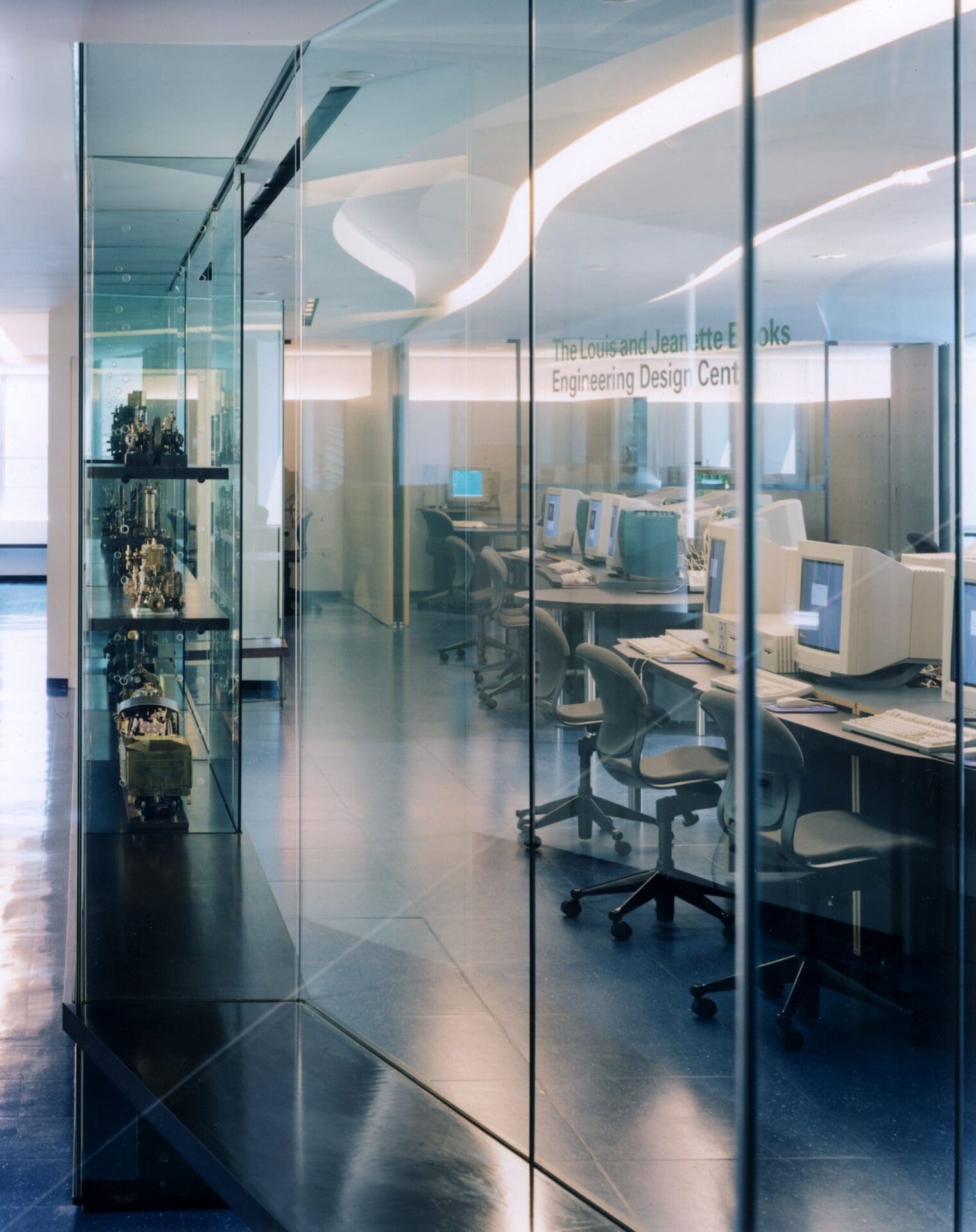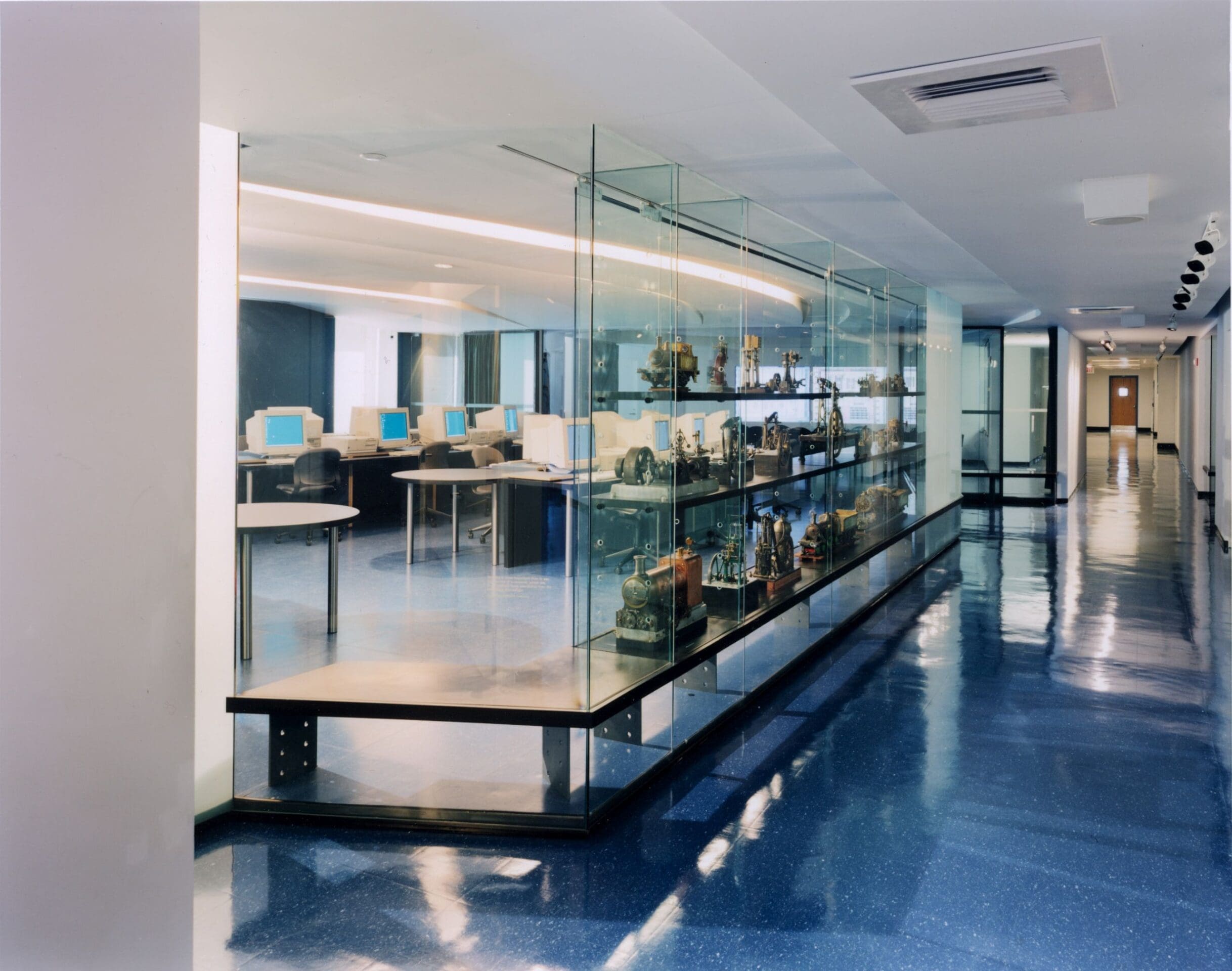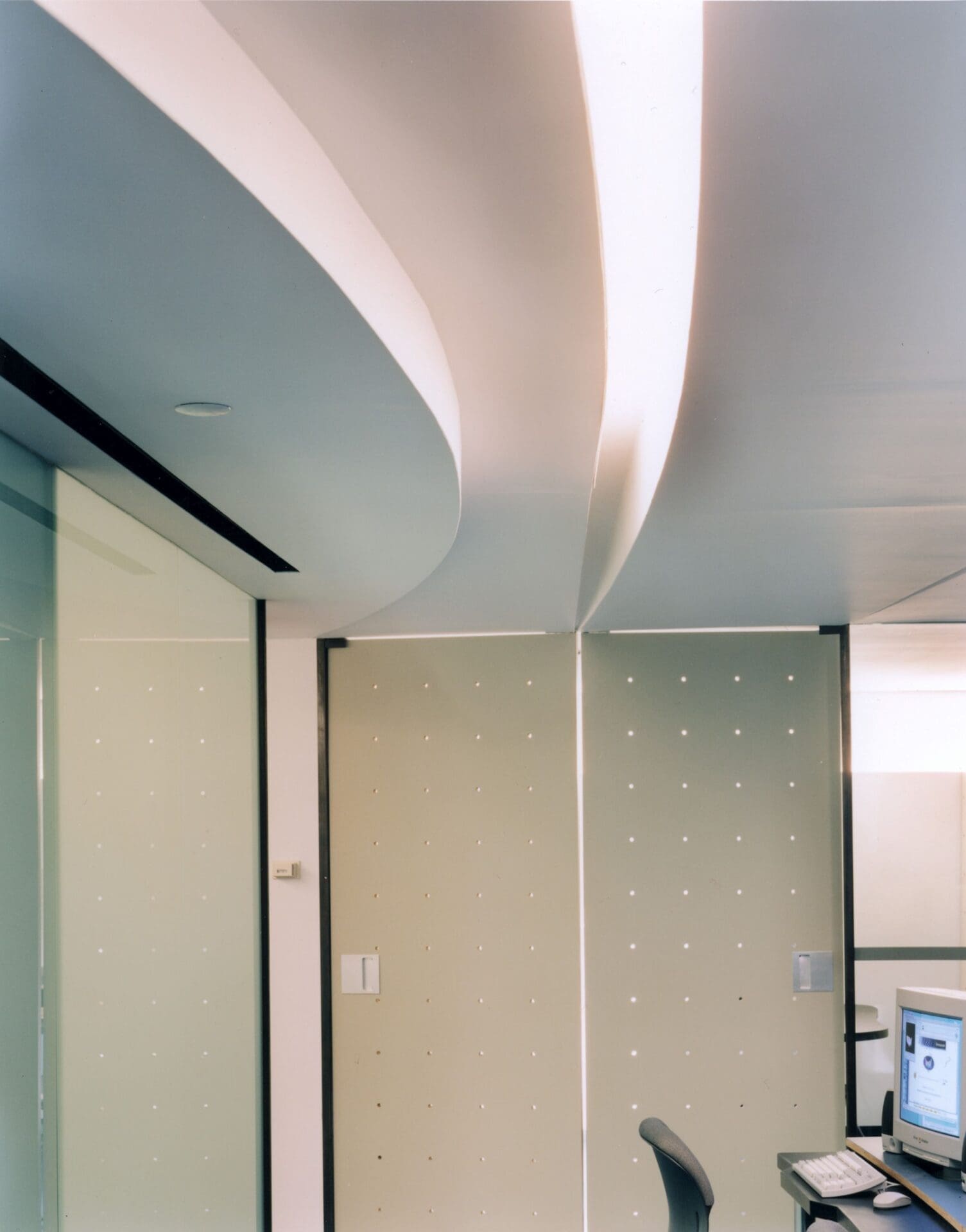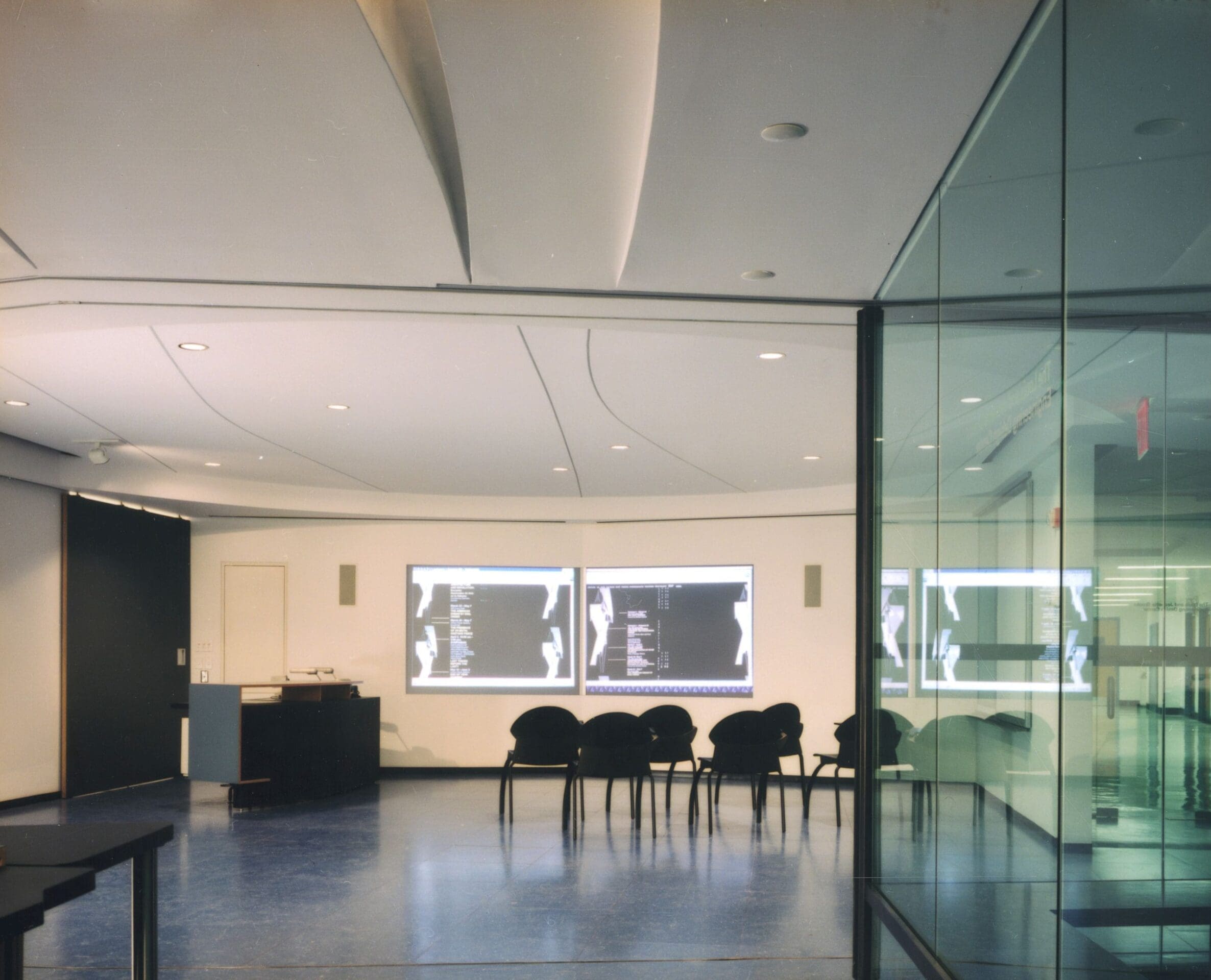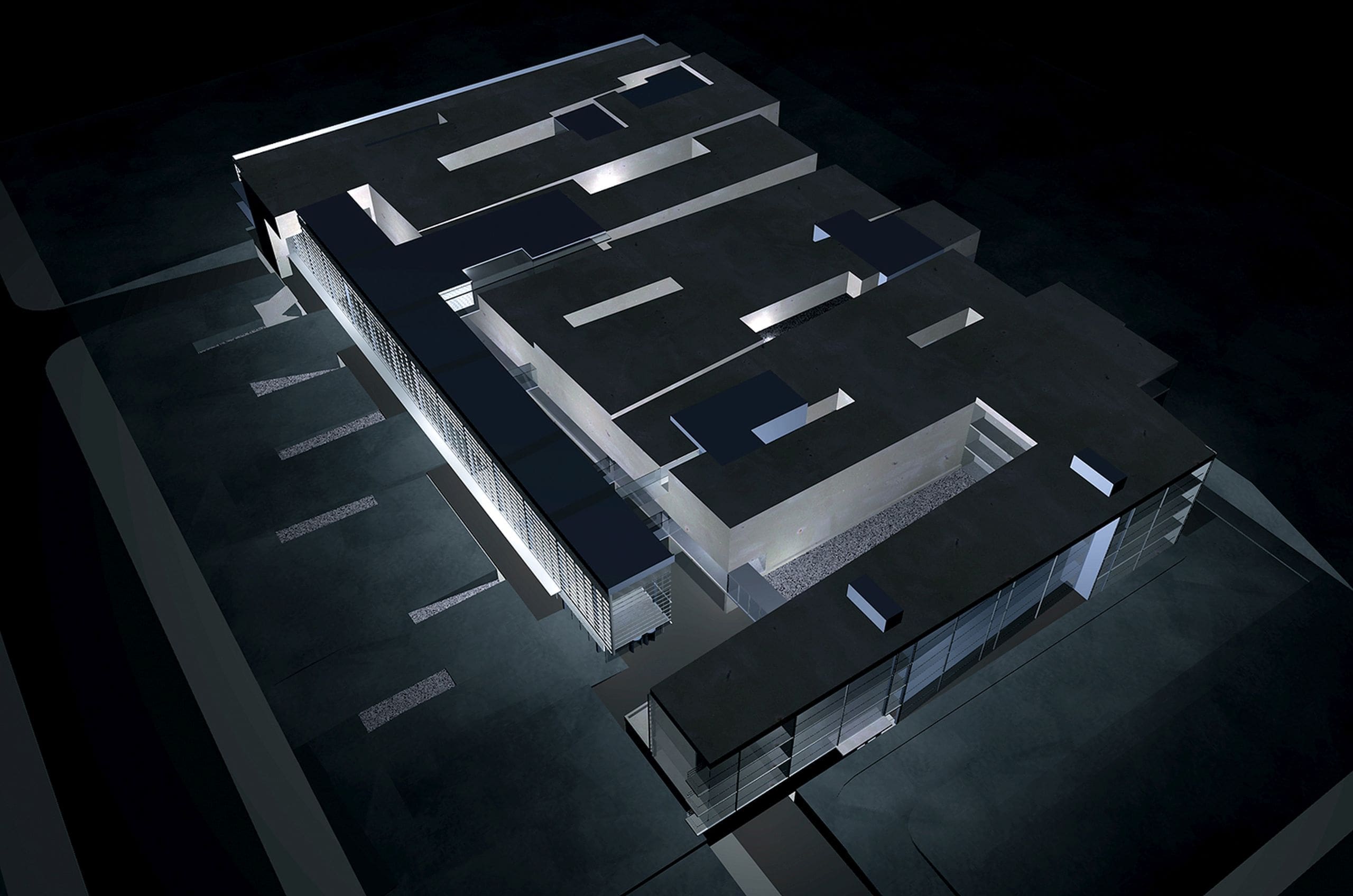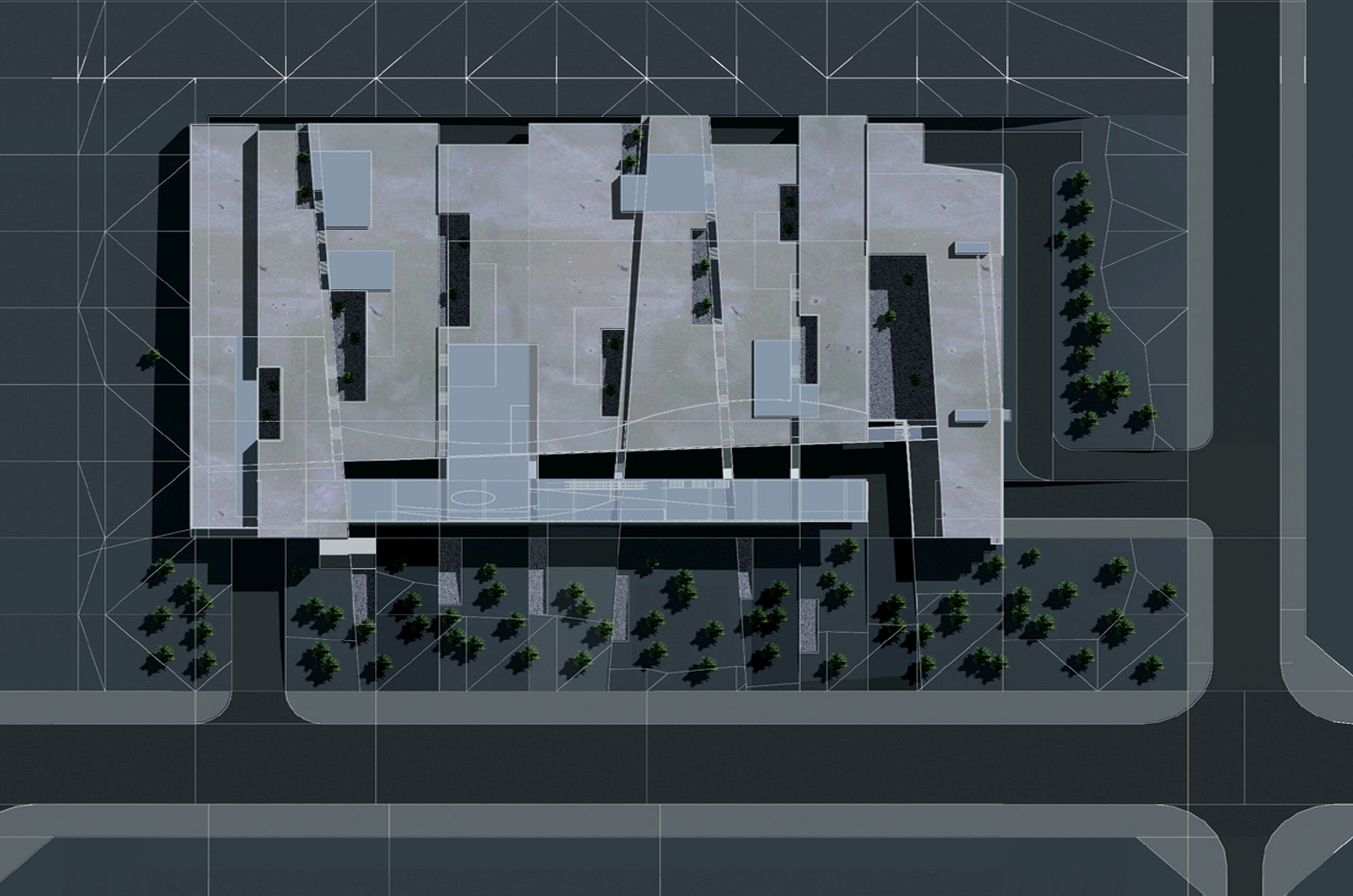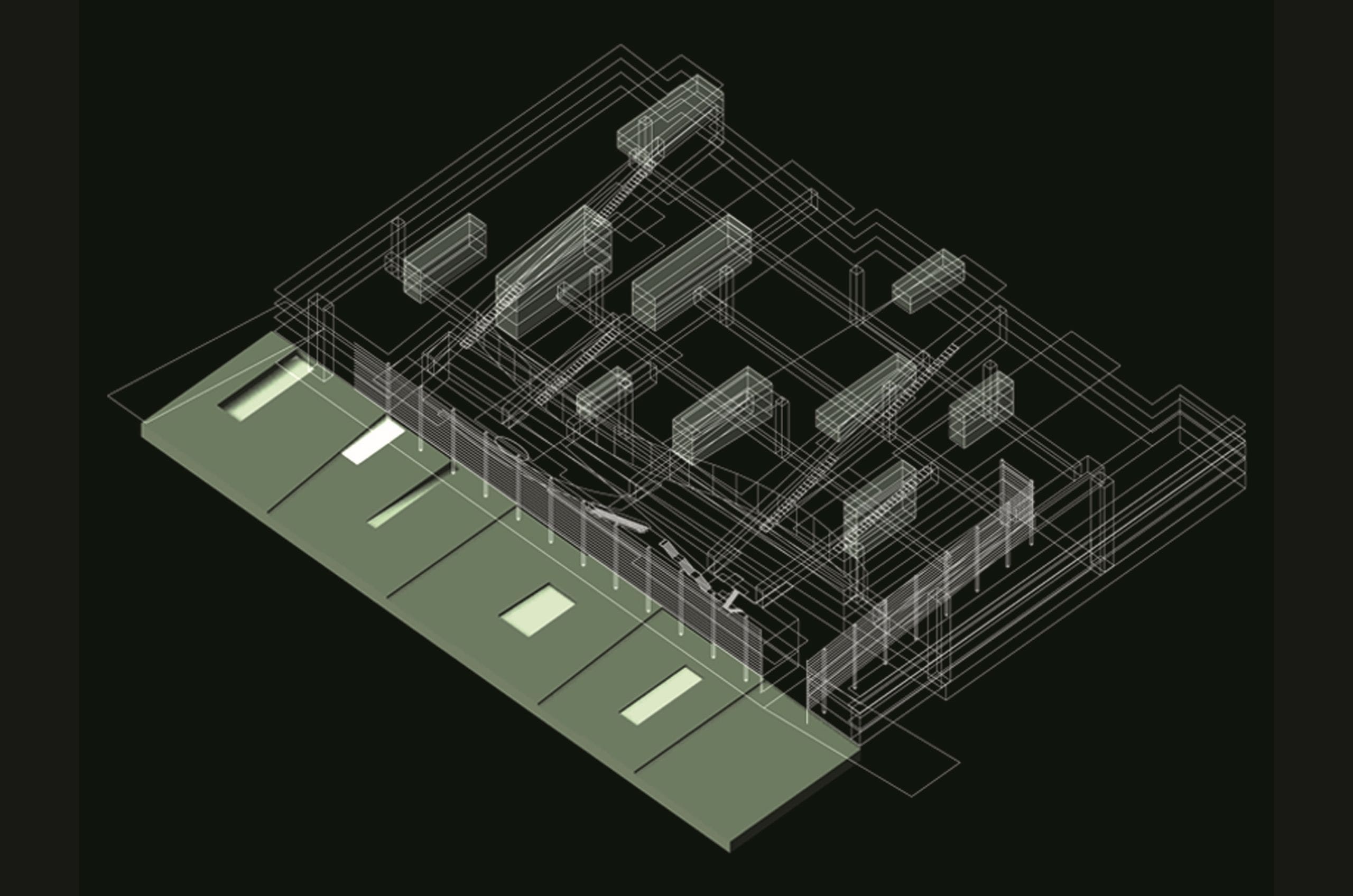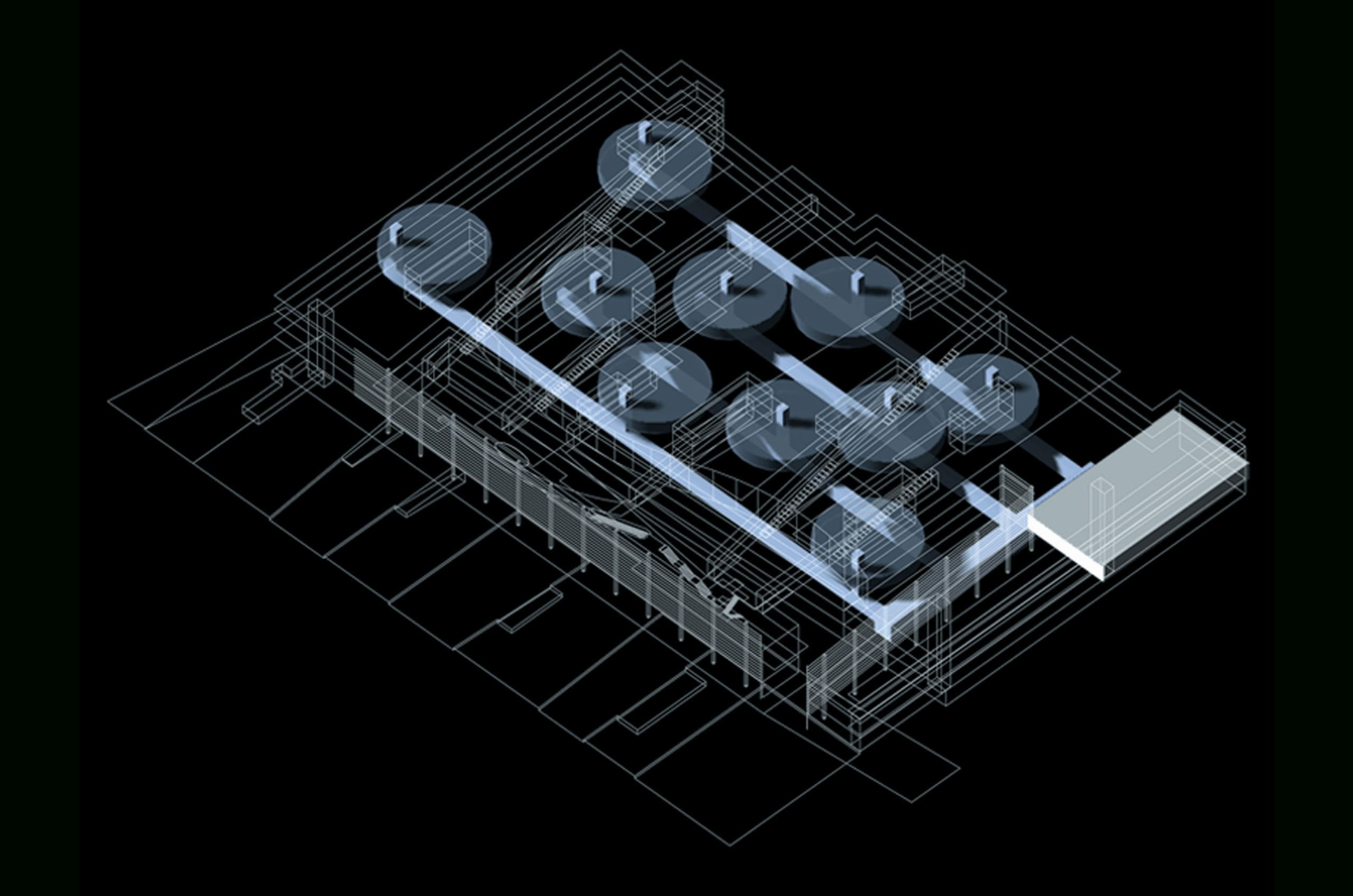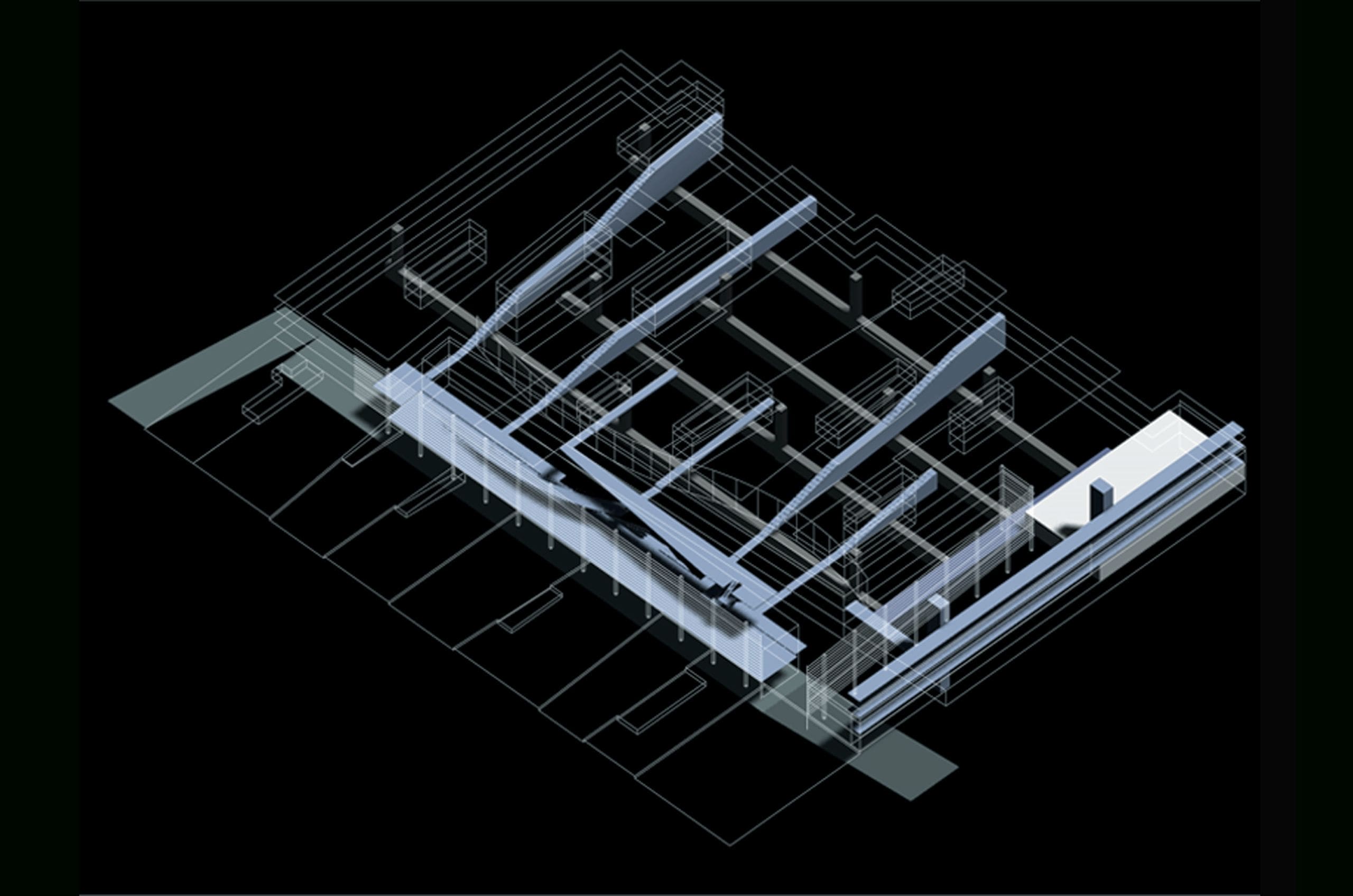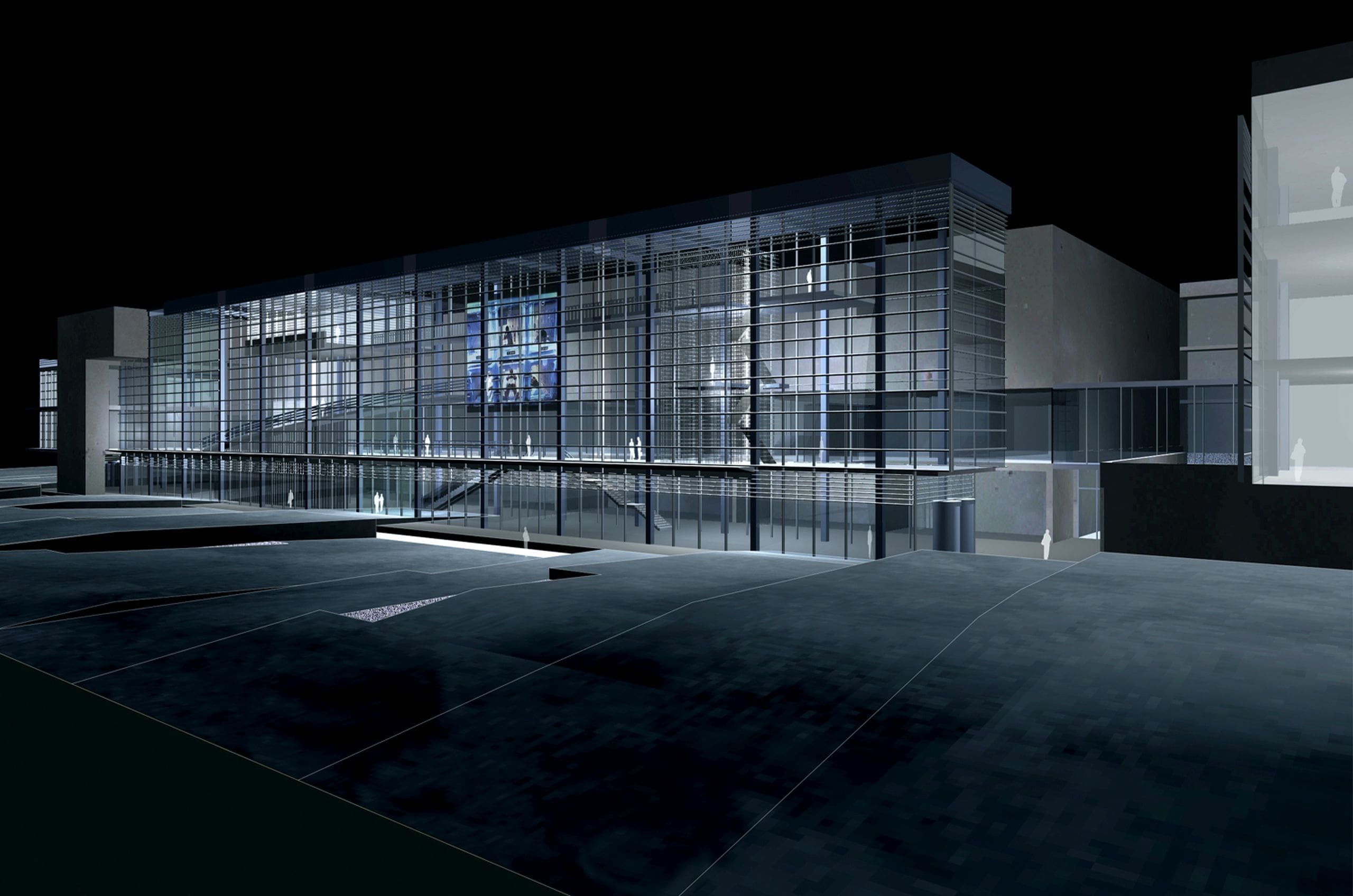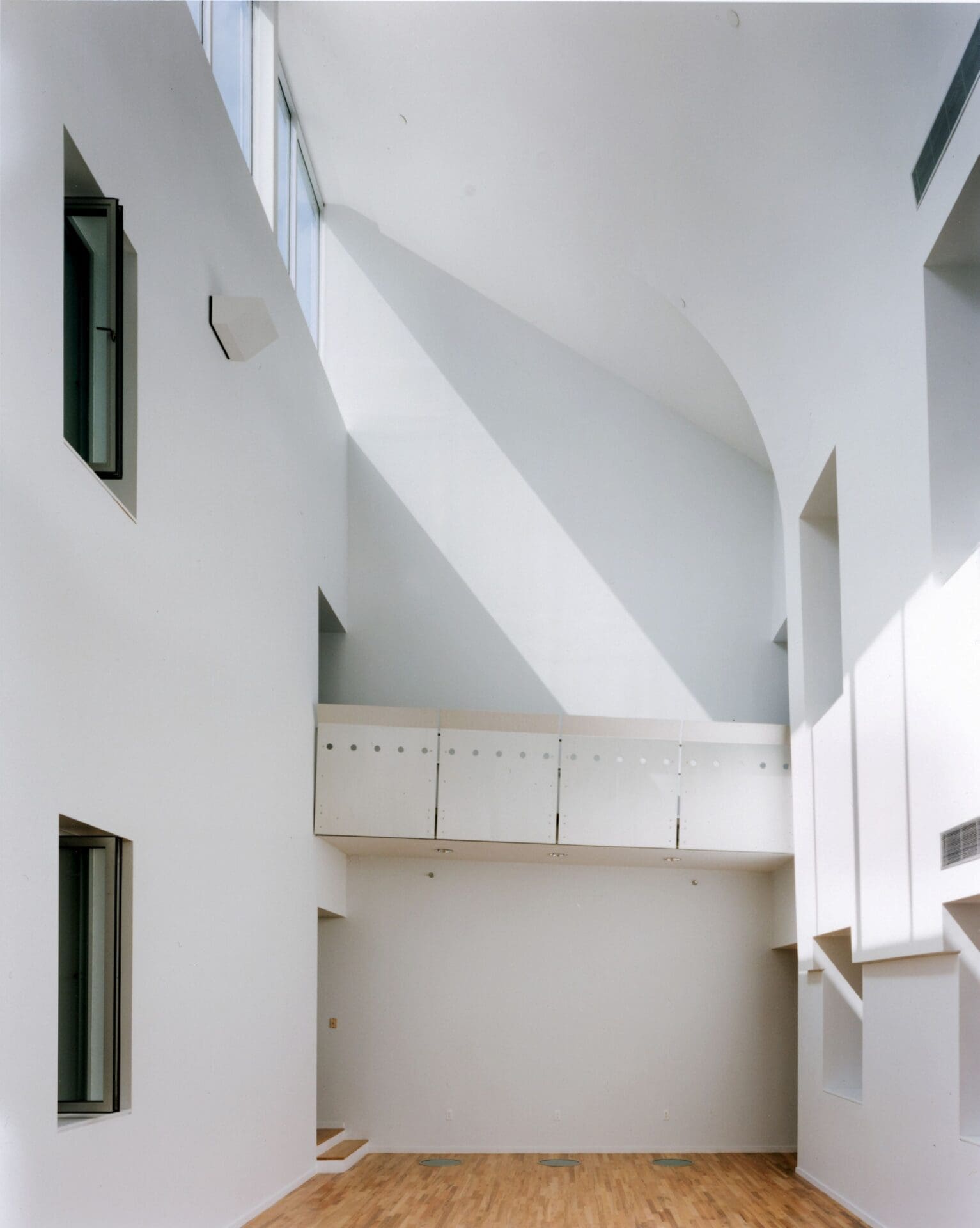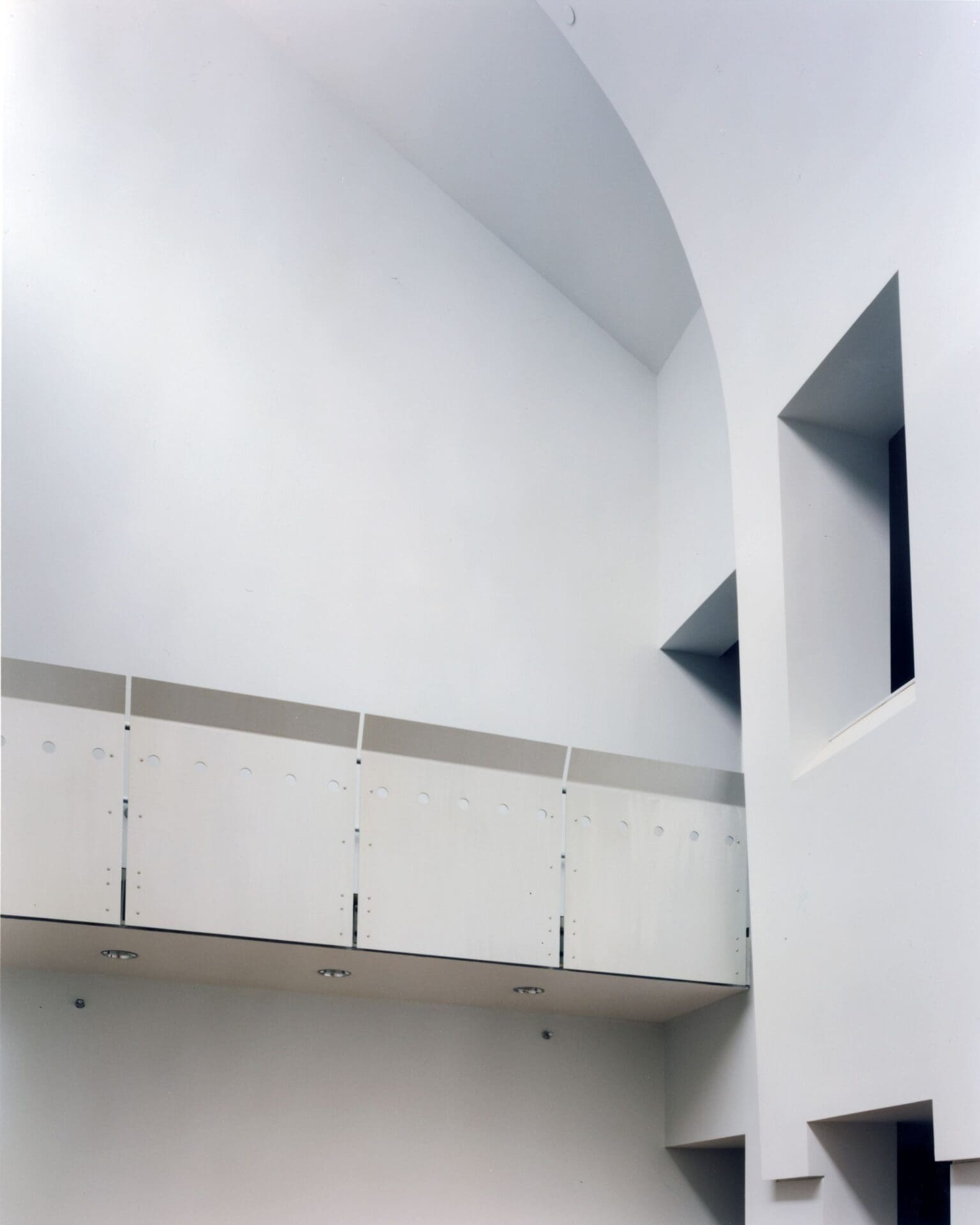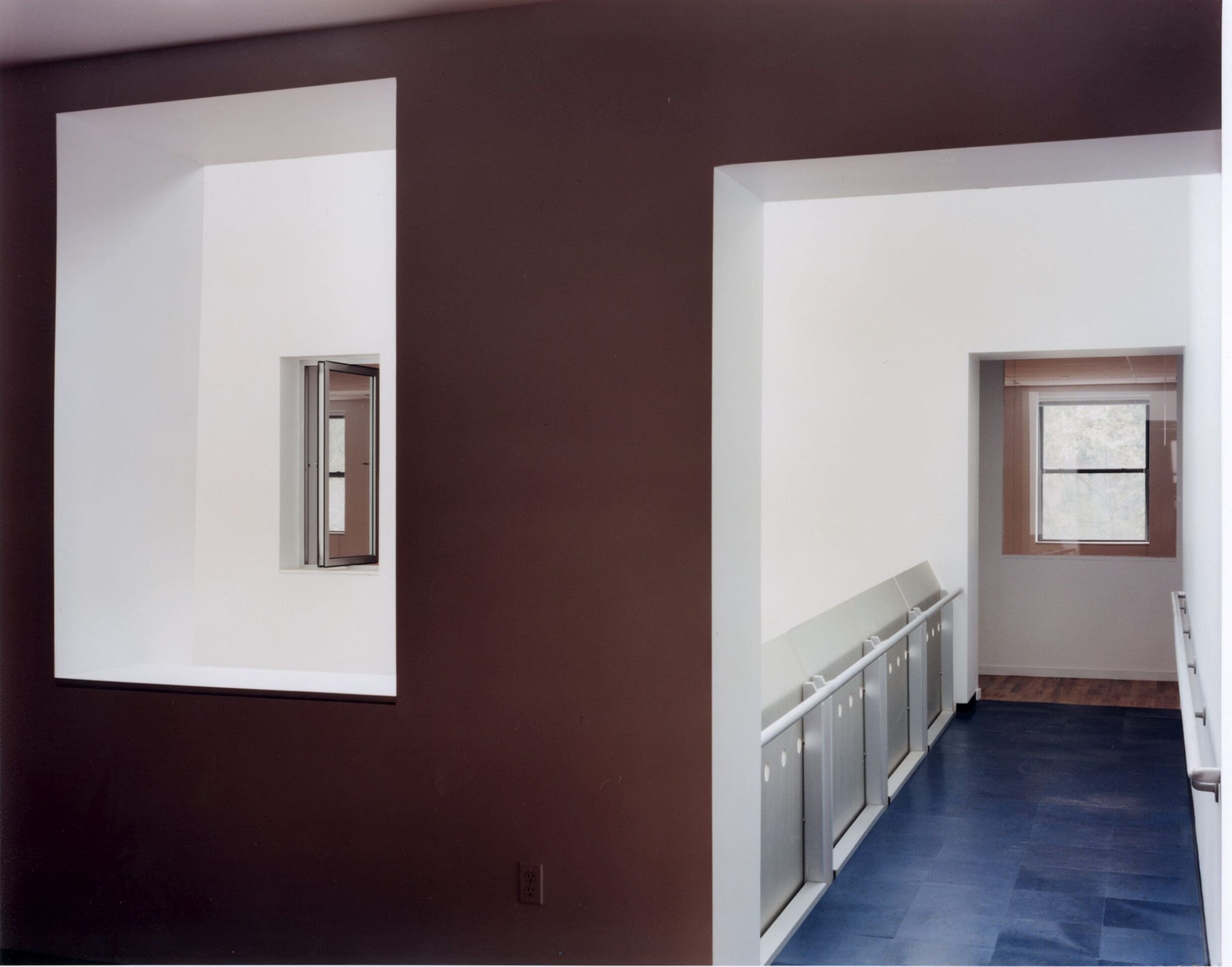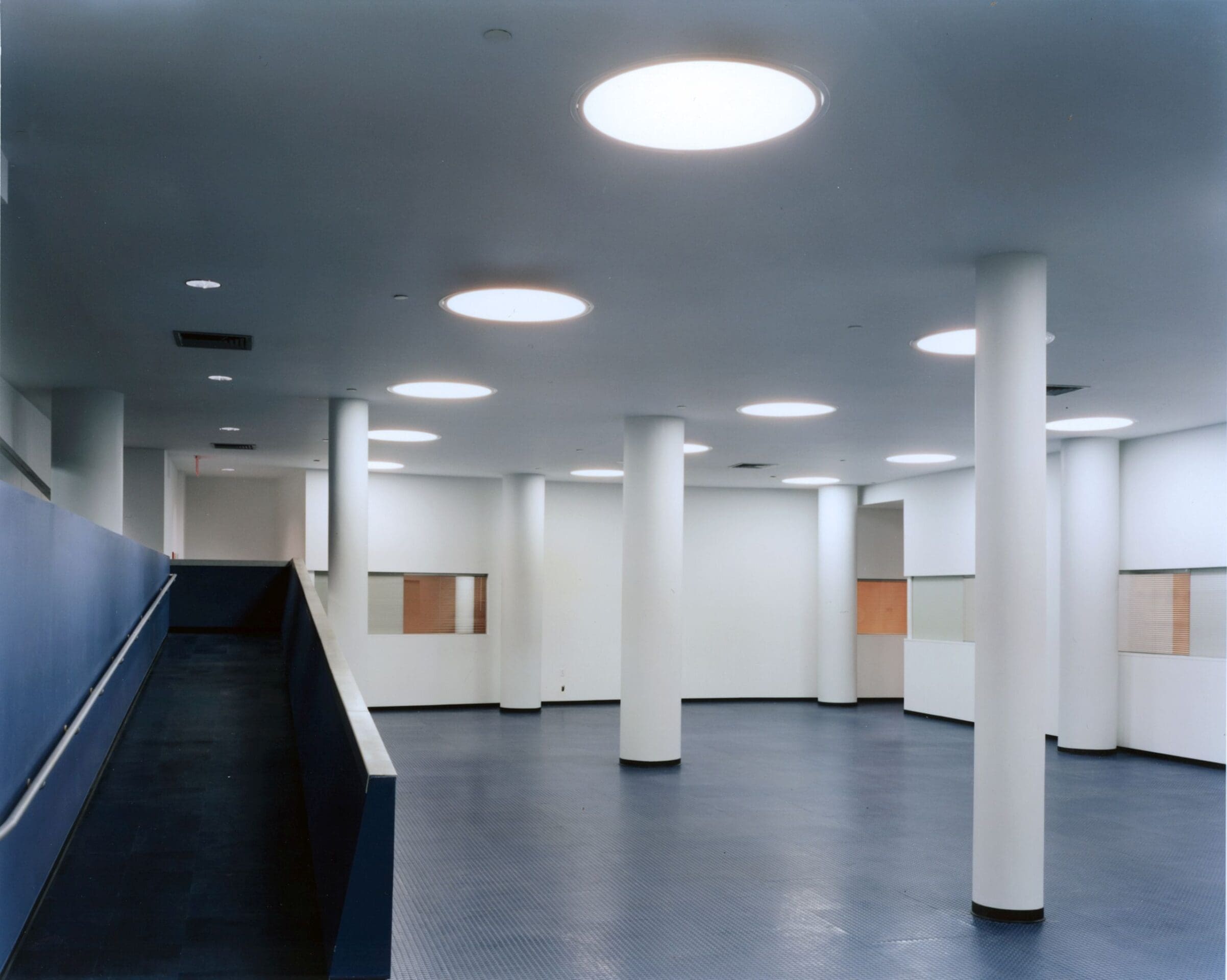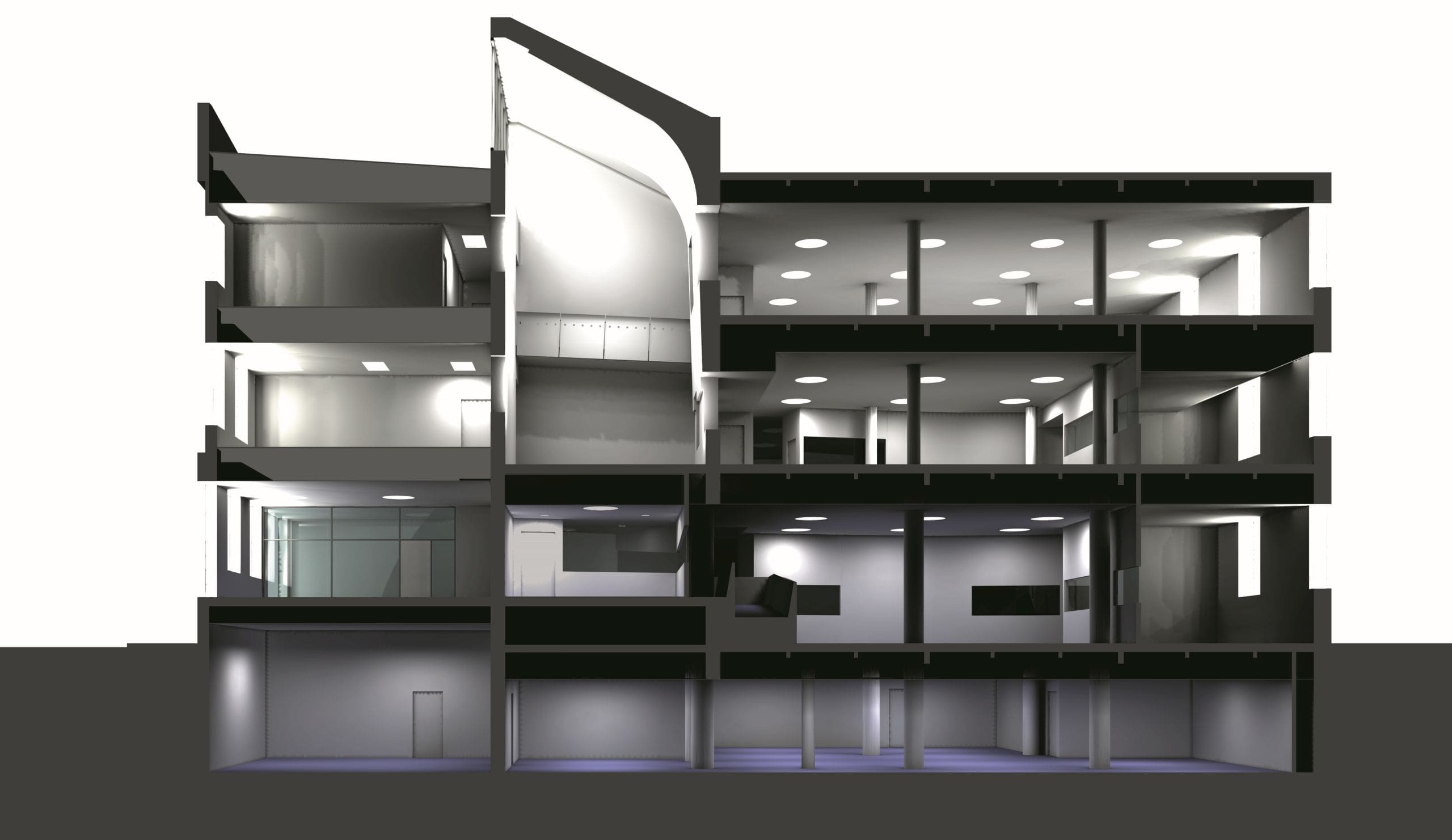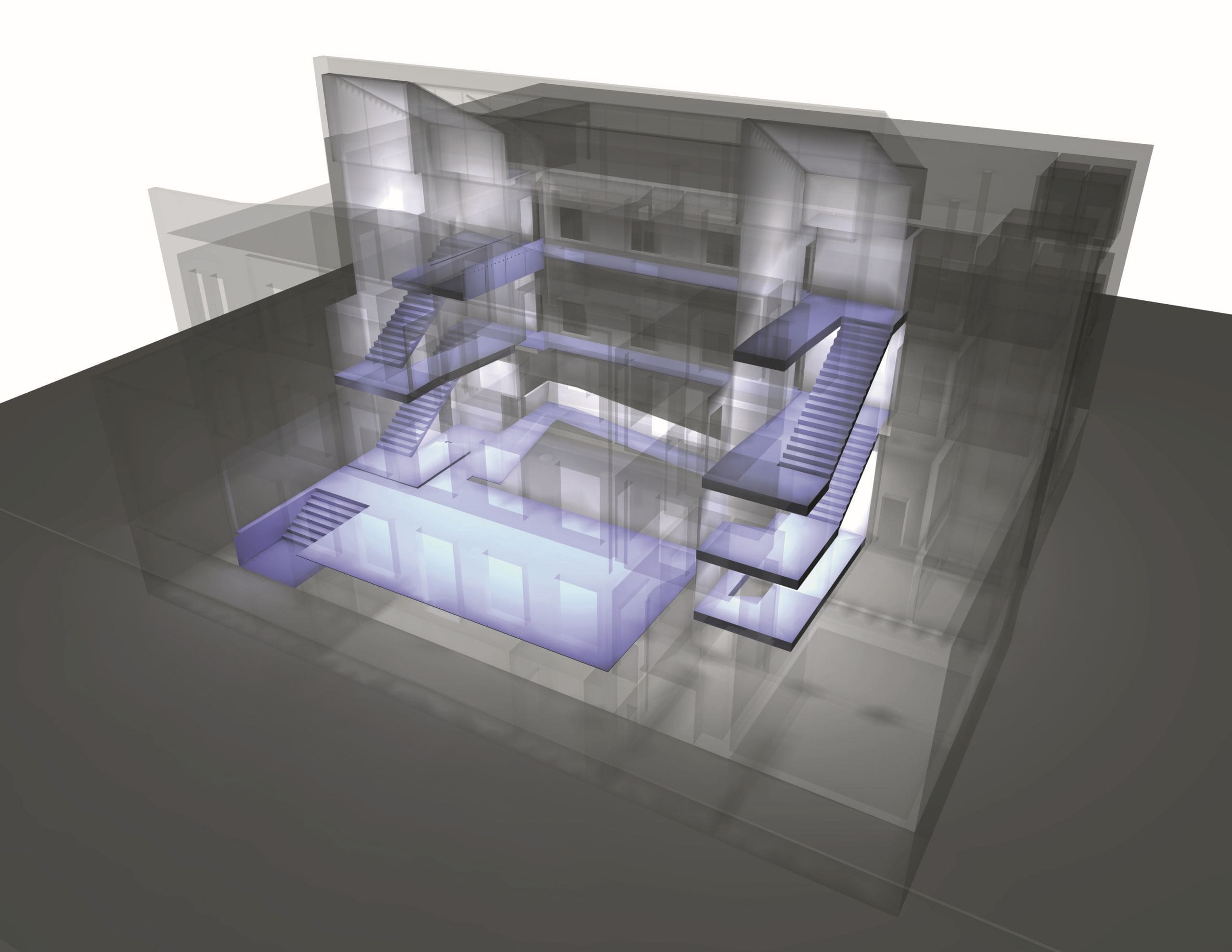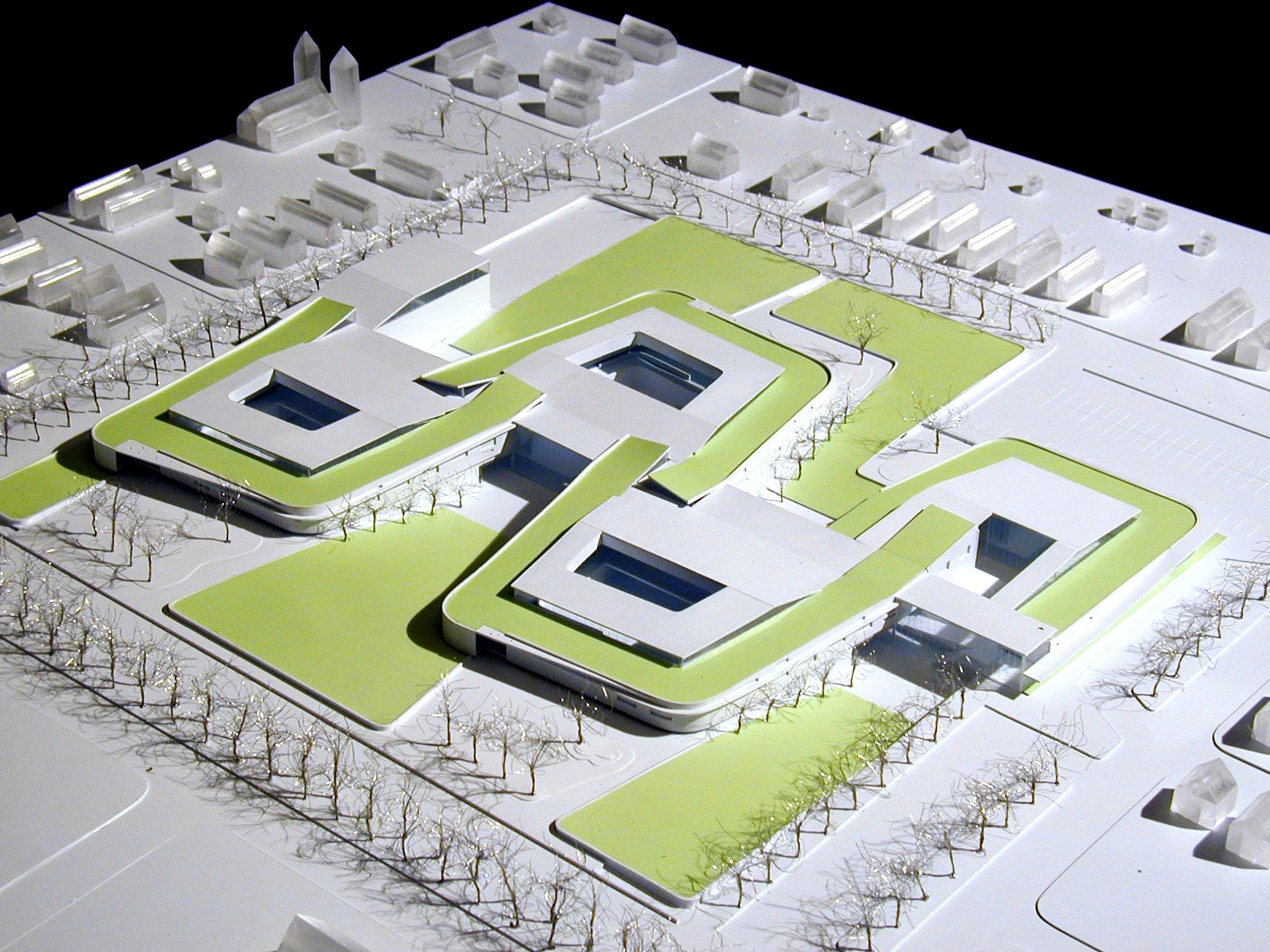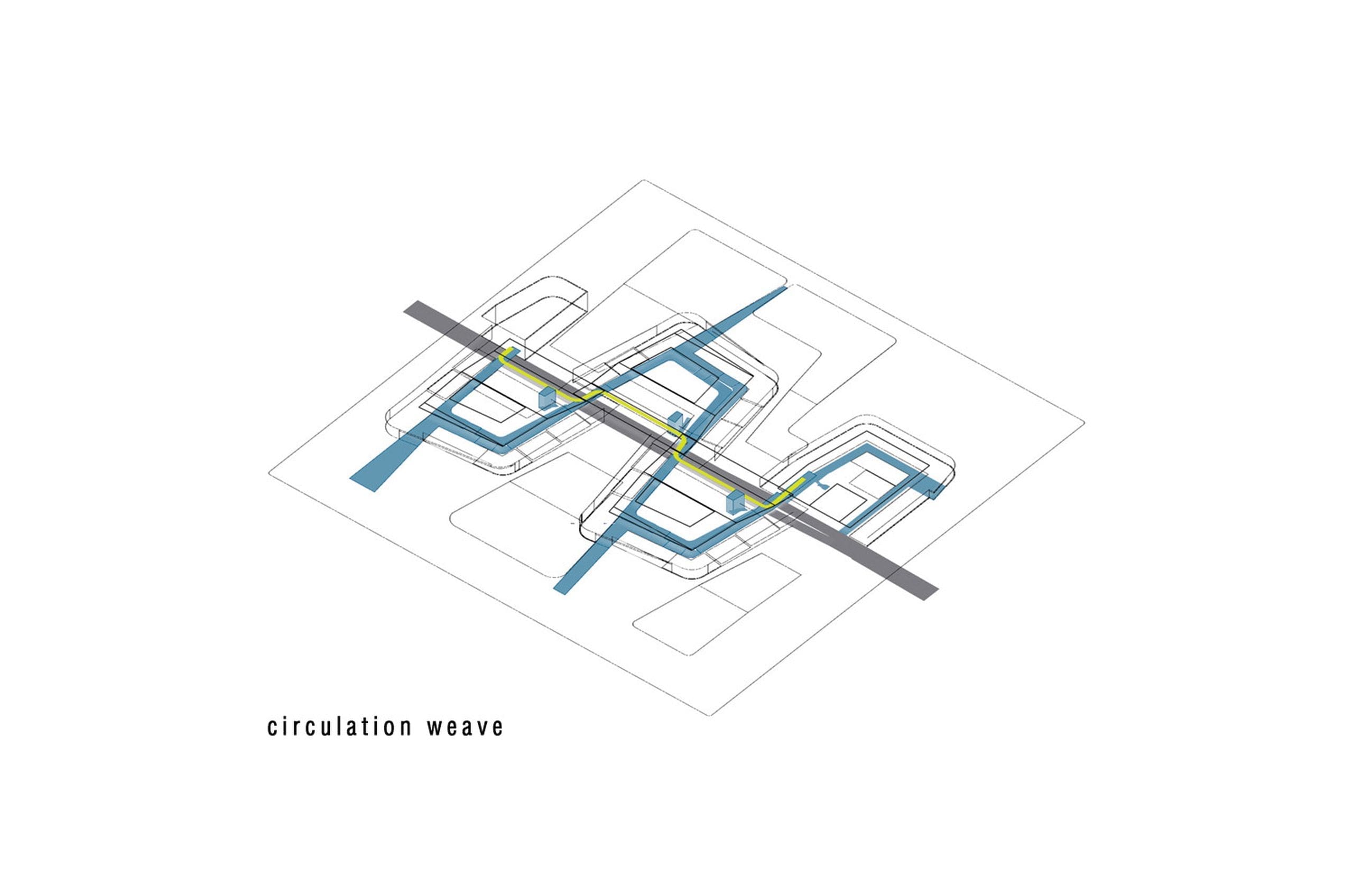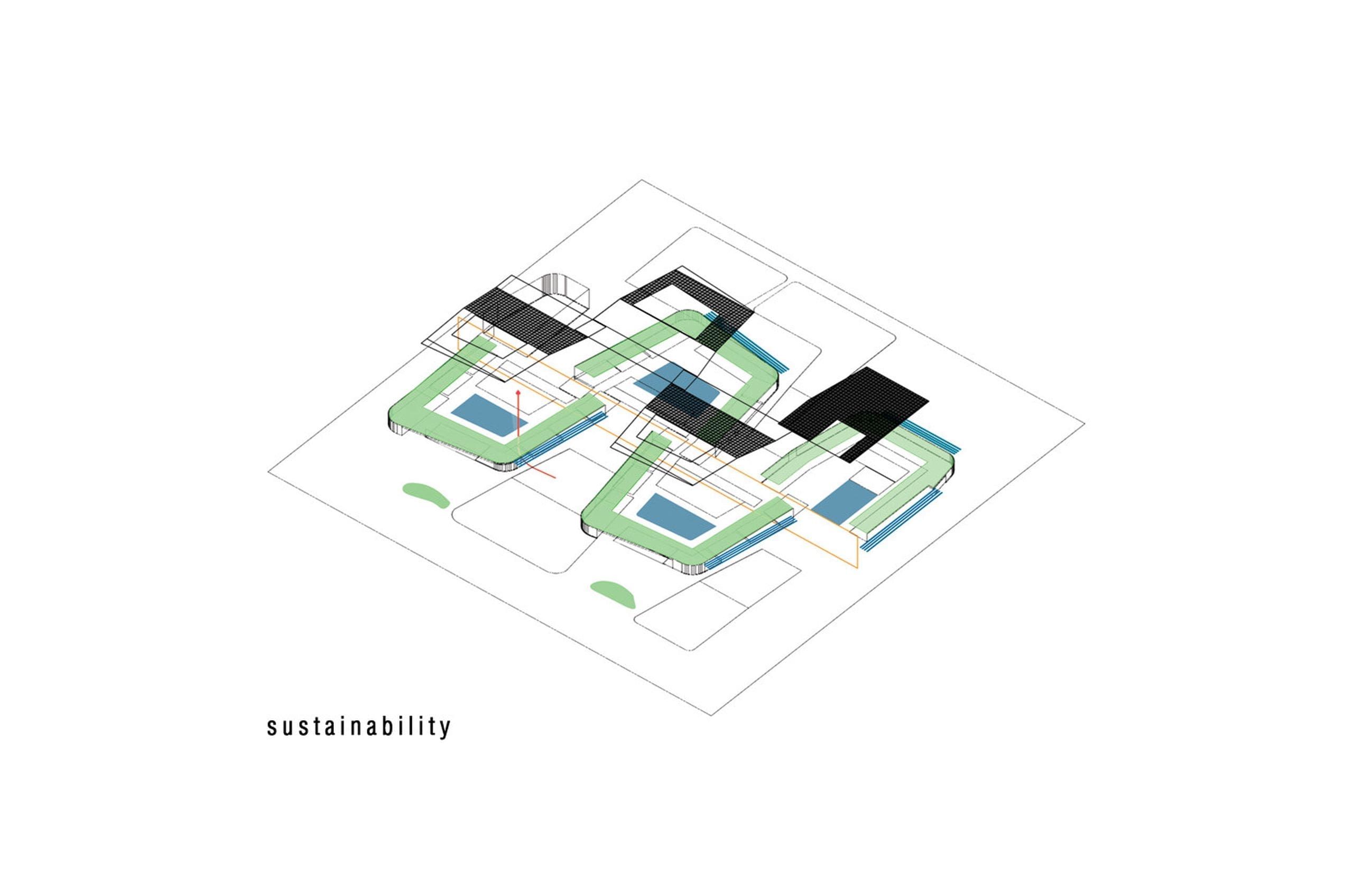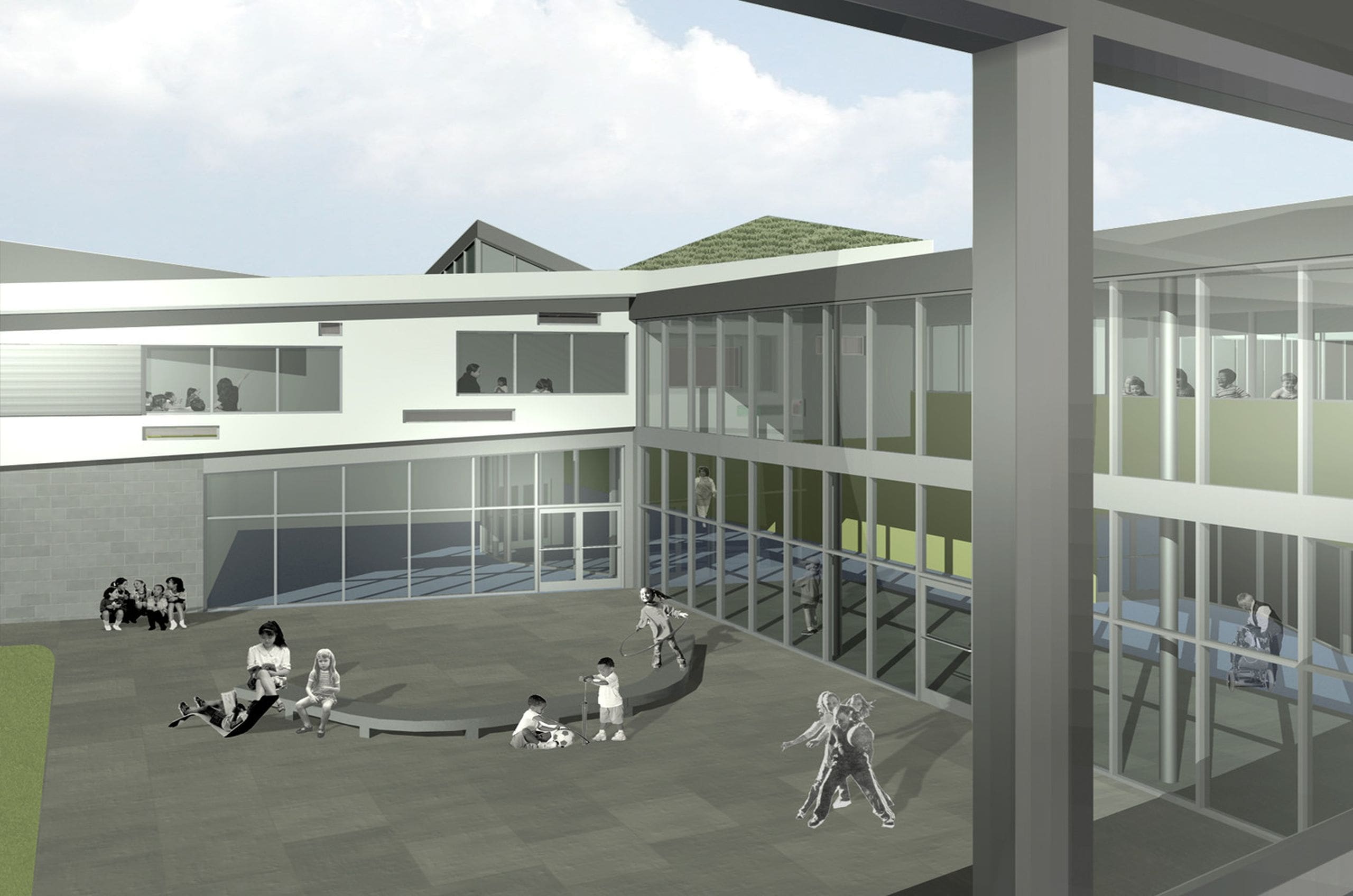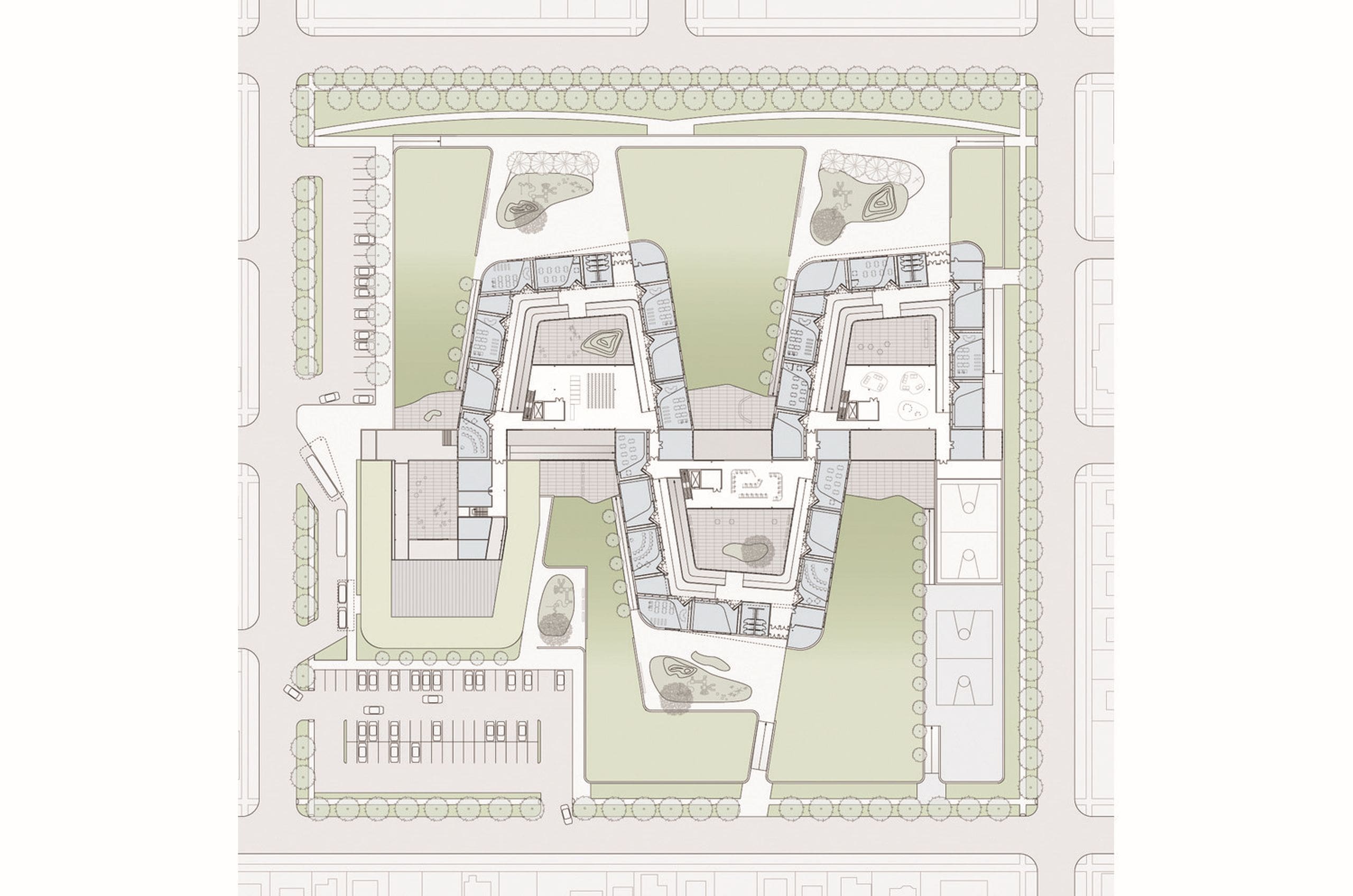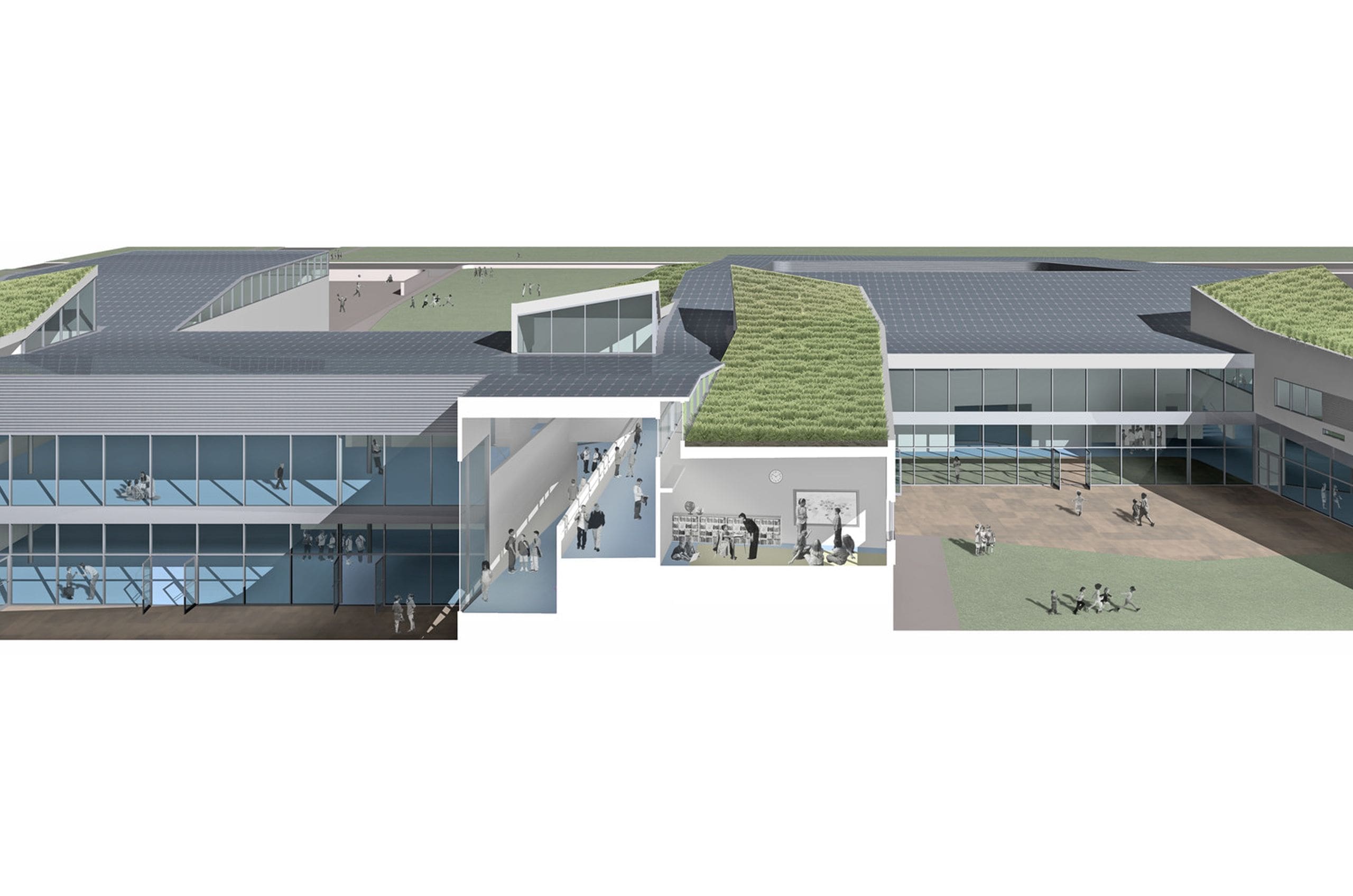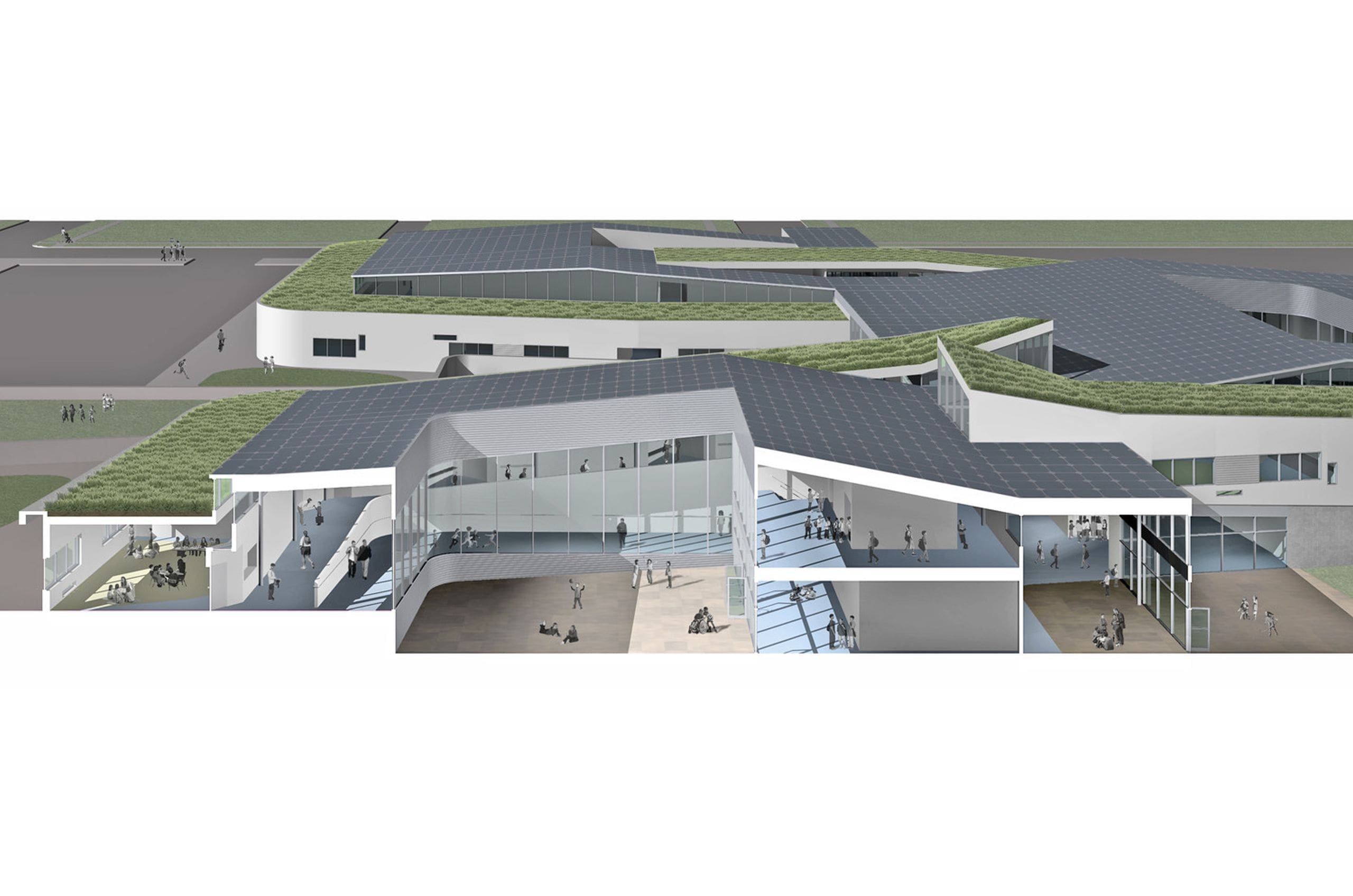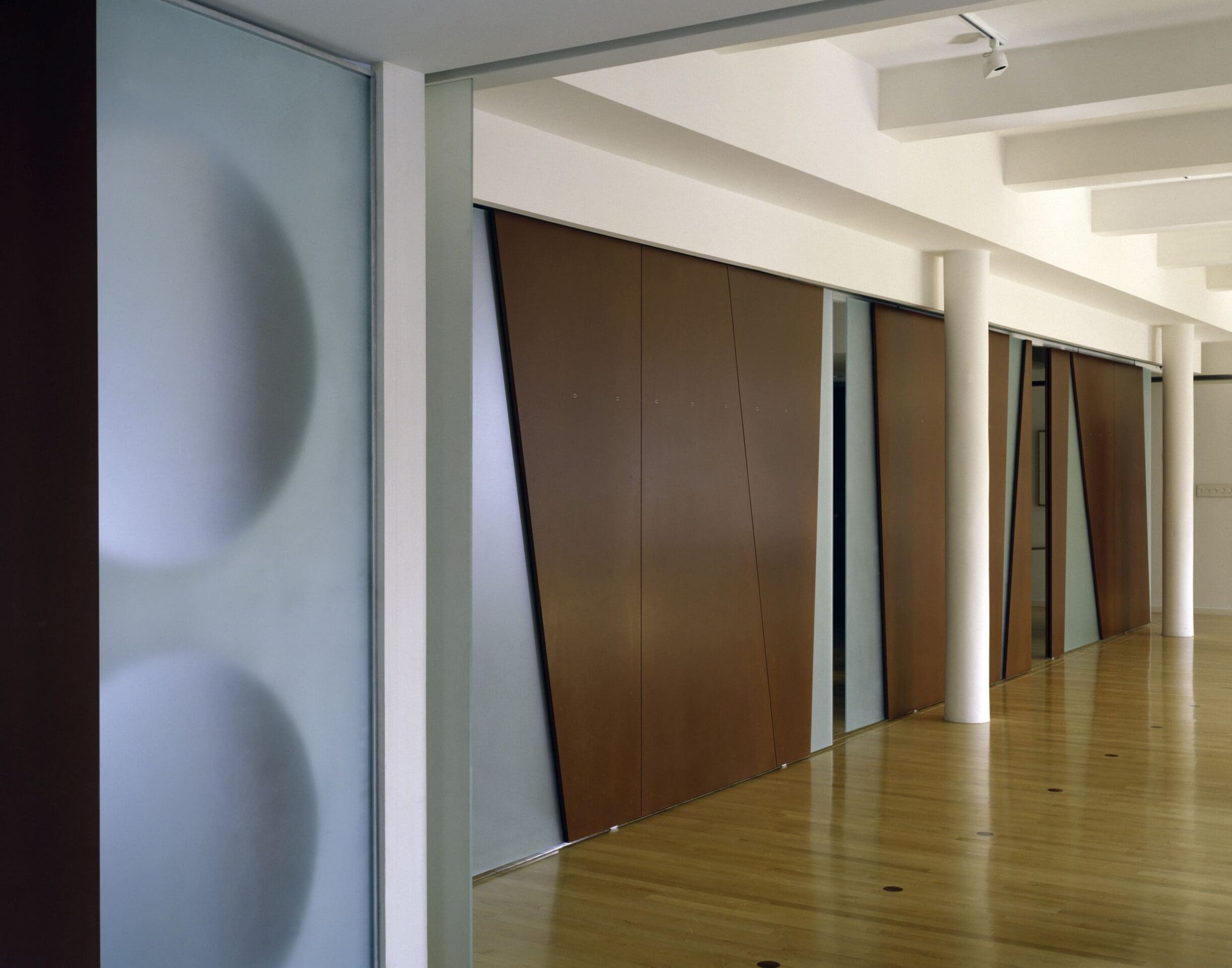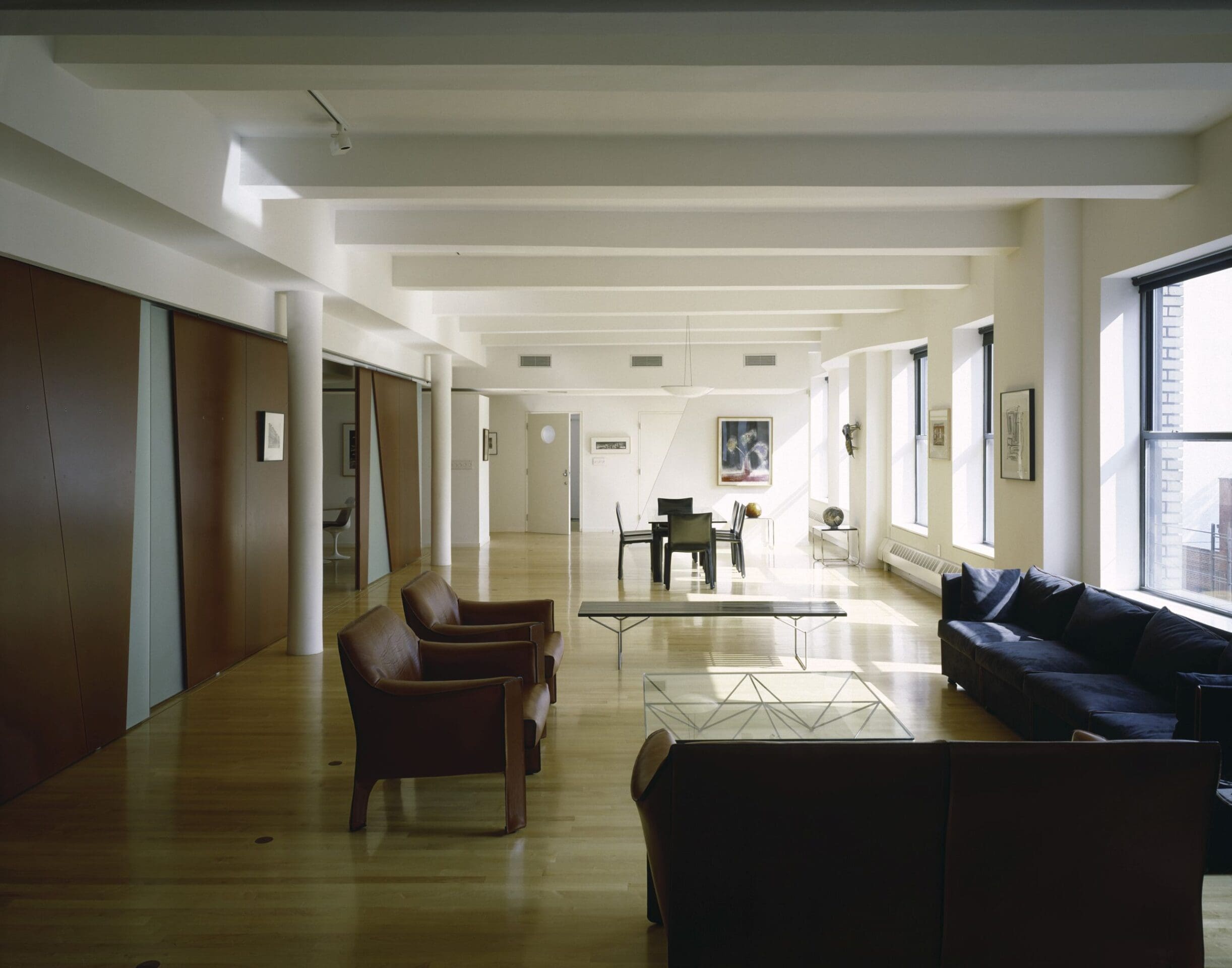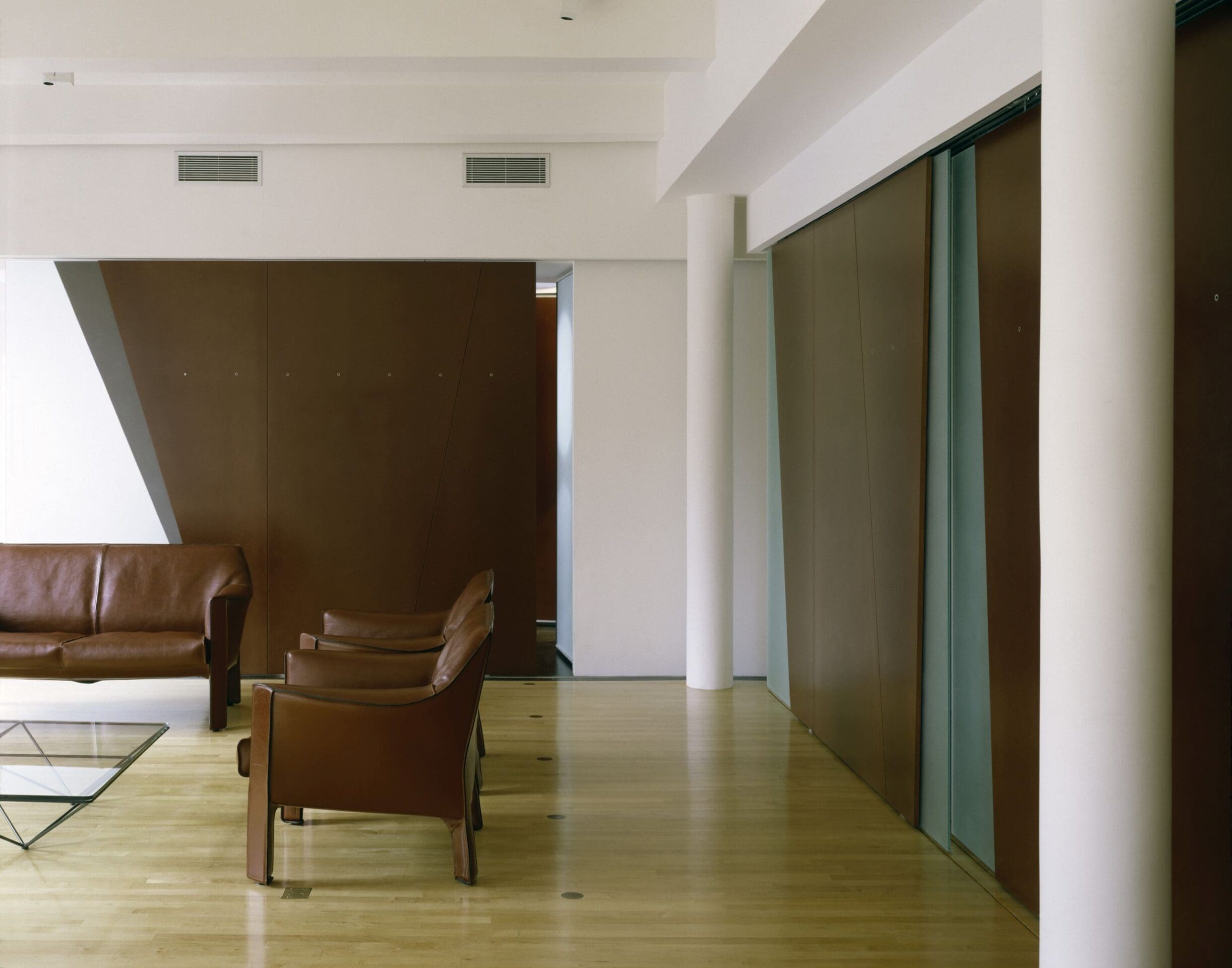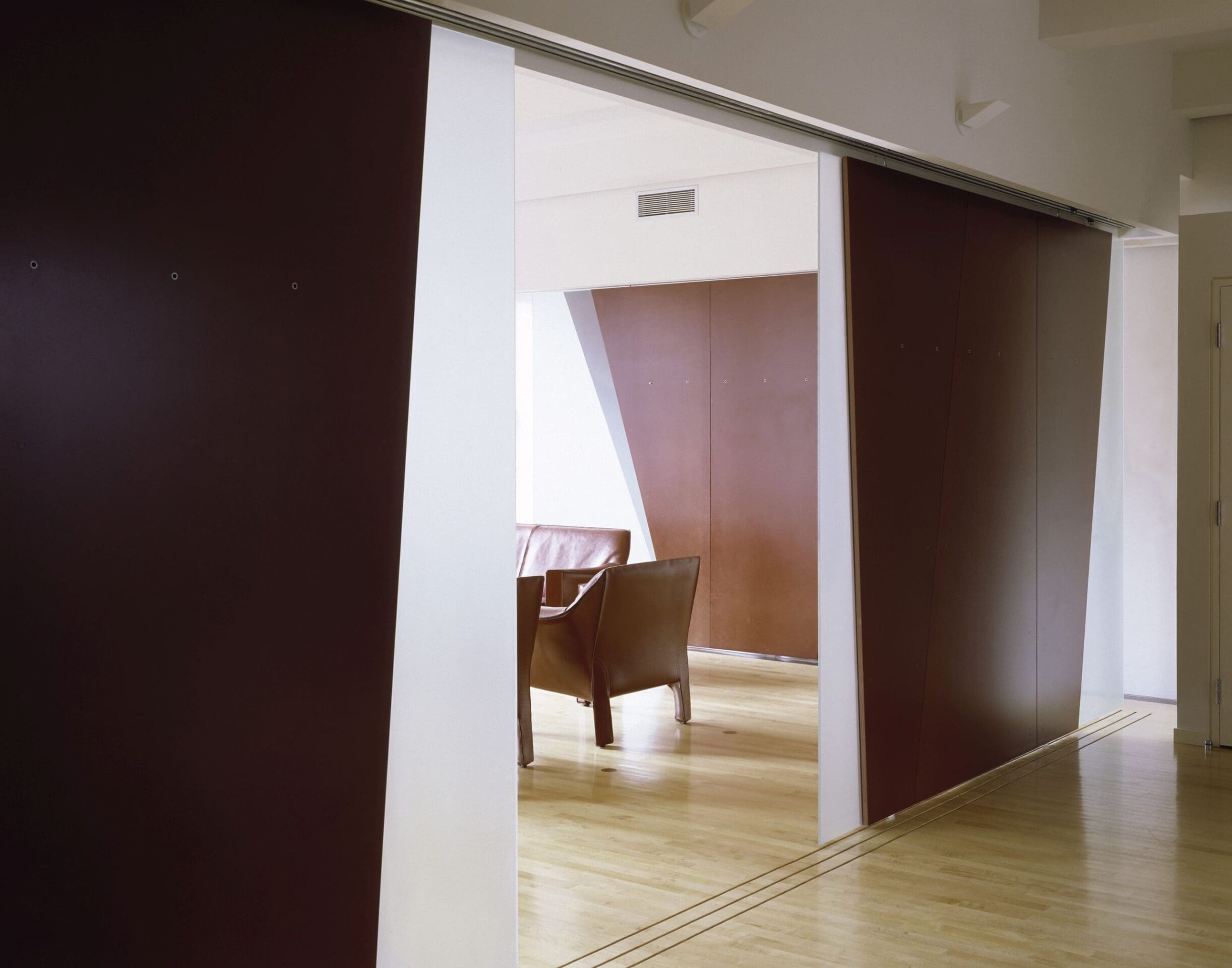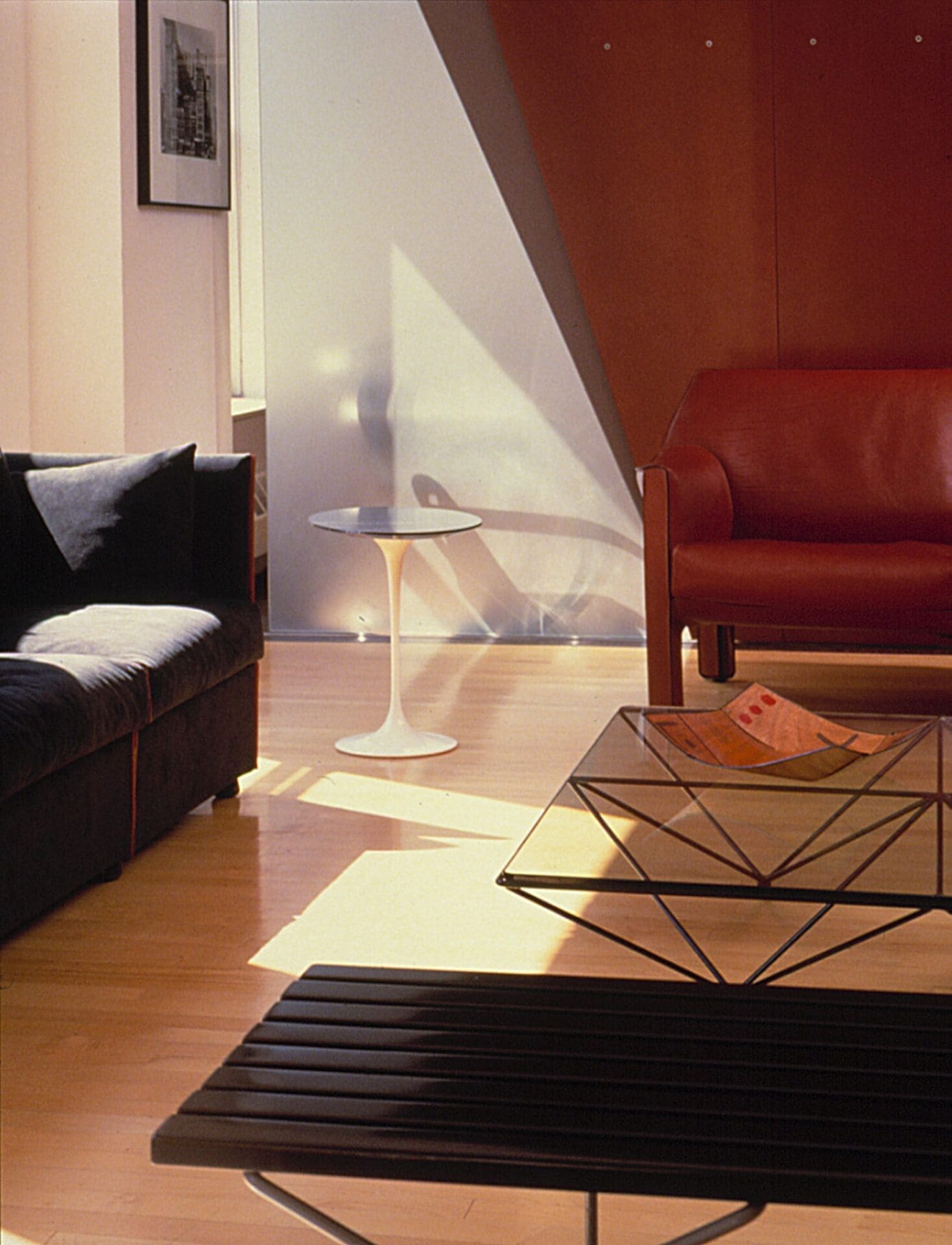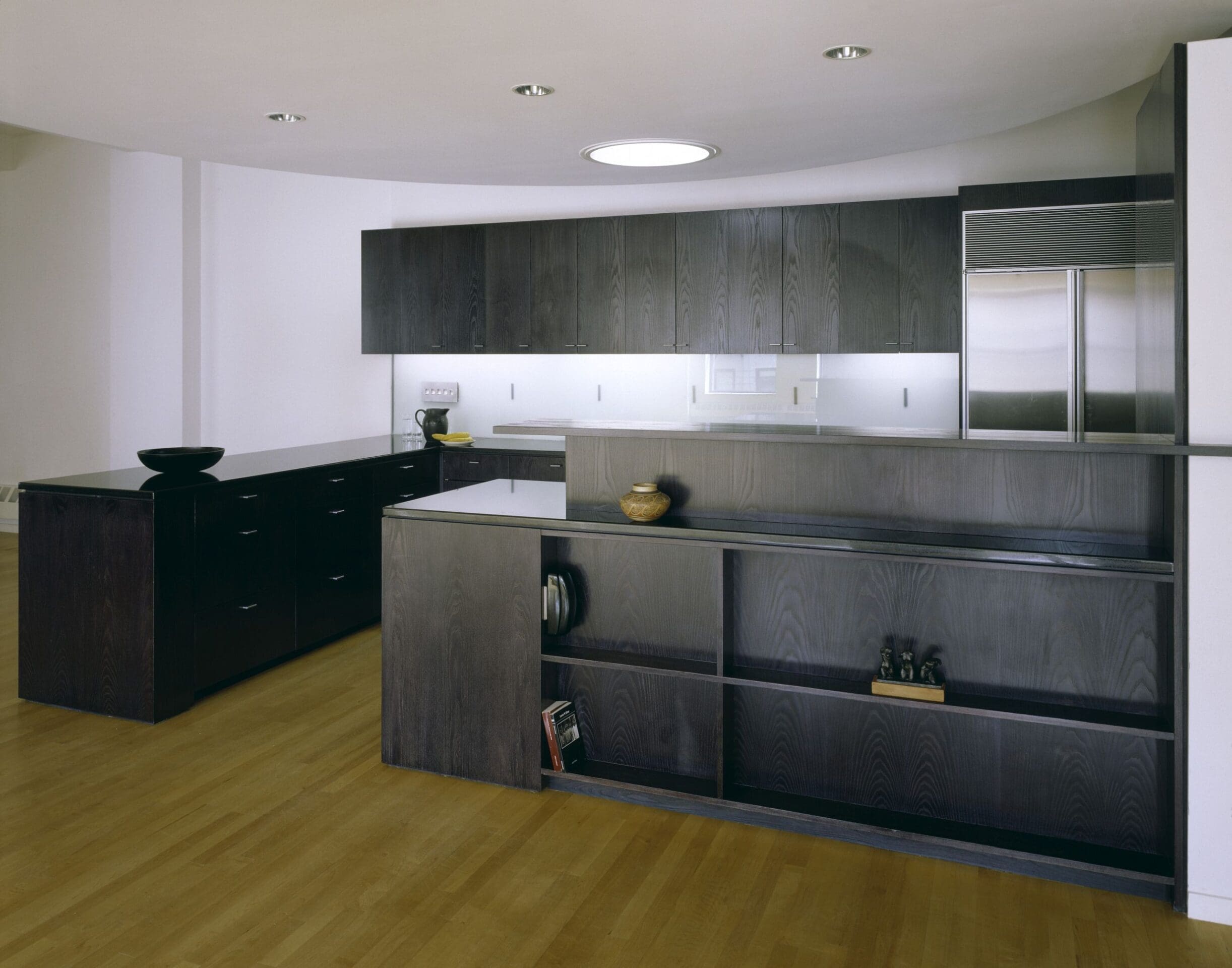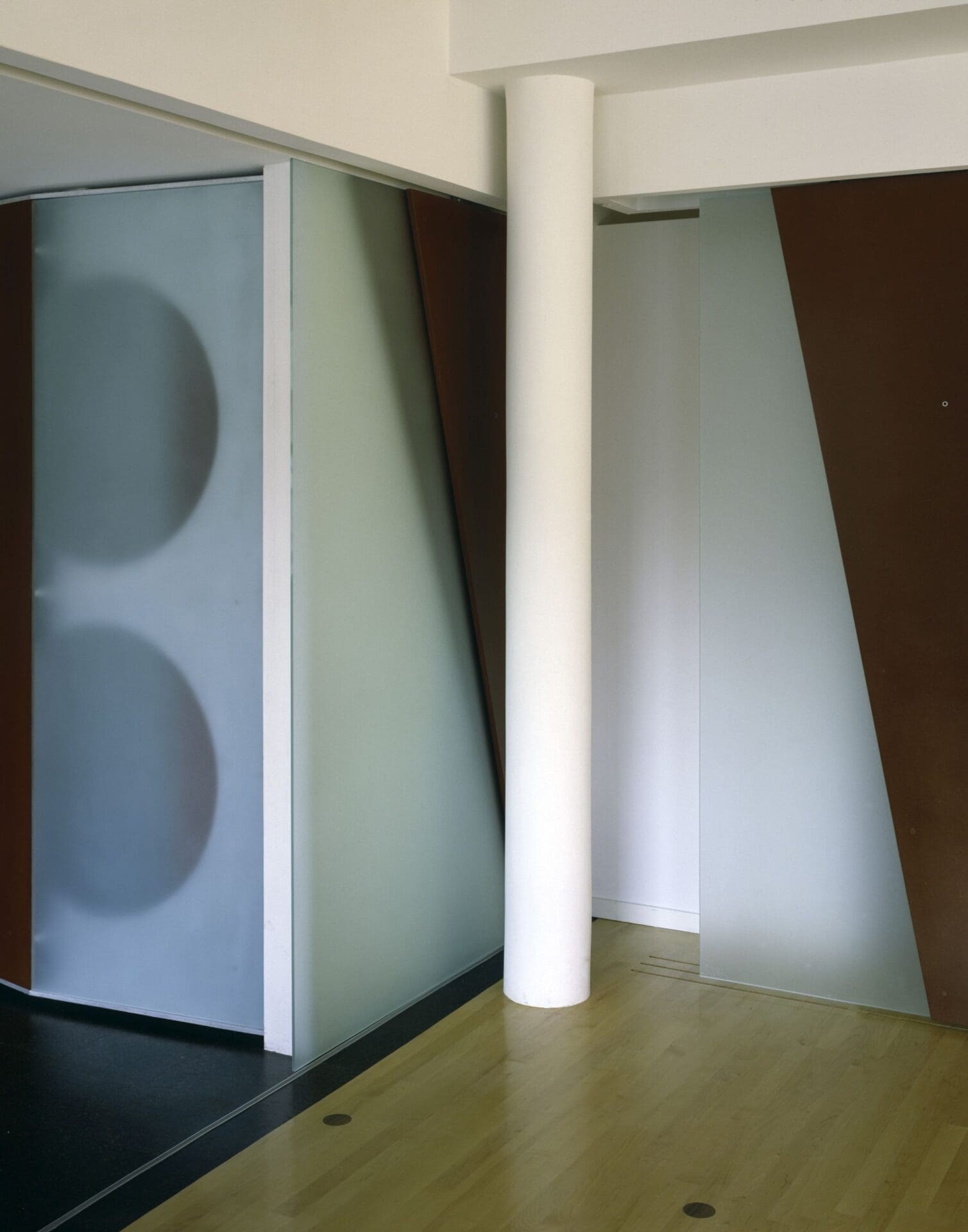Louise and Janette Brooks Engineering Design Center
The mandate was to develop a computer facility that would support state of the art hardware and software technology in an environment that encourages creative and poetic solutions to engineering problems.
This project coincided with a school wide evaluation of how the curriculum could respond to the emergence of these new technologies.
In contrast to models of teaching based on the hierarchy of information flowing from instructor to the students, using computer technologies as instruments of discovery encourages interactive, project-based learning that leads to more complex collaborative teaching models and the potential for more independent learning through interactive media.
The organization of the new Design Center explicitly addressed this condition by carefully structuring visual, programmatic and technological links between the corridor, gallery, workstations, theater, and study cubicles to form an integrated learning environment.
Location
New York, NY
Client
The Cooper Union
Year
1998
Size
3,000 sqft
MFA Design Team
Scott Marble, Karen Fairbanks, David Riebe, Rebecca Carpenter, Jenny Wu, Todd Rouhe, Scott Paterson, Mari Fujita, Jake Nishimura
MEP Engineer
Arup
Design & Digital Technology Consultants
CyberSites, Inc.
General Contractor
Noah & David
Steel Fabricator
Product & Design
CNC Millwork
Bjork Carle Woodworking
Recognition
Design Award, AIA New York
Photography
Eduard Hueber / Arch Photo, Inc.
